Chemistry and Chemists № 1 2024
Journal of Chemists-Enthusiasts
| Content | Chemistry experiments - video | Physics experiments - video | Home Page - Chemistry and Chemists |
|
Chemistry and Chemists № 1 2024 Journal of Chemists-Enthusiasts |
Horse chestnut, cologne, emulsion and fluorescence (esculin) - pt.2, 3 V.M. Viter |
|
Having noticed a mistake in the text, allocate it and press Ctrl-Enter
Experimenting with a glowing cologne is fascinating. However, another cologne sold under the same name may not fluoresce under ultraviolet light, even if the label says: "Cologne infused with horse chestnut." You cannot trust labels these days, as manufacturers often deceive buyers.
But is this a problem? In the autumn, I collected some seeds of the horse chestnut (Aesculus hippocastanum). I can grind the seeds, then pour alcohol over them to extract aesculin. It is possible that the seeds also contain other compounds that glow under ultraviolet light. I crushed two chestnut seeds, placed them in a flask and added 30 ml of ethyl alcohol (95%). Then, I brought the switched-on ultraviolet lamp close to the flask. The result was that neither the liquid nor the pieces of horse chestnut seeds glowed in the flask. Perhaps the aesculin extraction takes more time. I already knew then that this was not the case. The glow of the alcohol is immediately noticeable if horse chestnut seeds contain a fluorescent compound; otherwise, increasing the extraction time will not produce significant results. Nevertheless, I allowed the flask with the seeds and alcohol to stay undisturbed for a day. What is the reason for my failure? Gradually, I began to guess. Why did I decide that the cologne was infused with horse chestnut seeds? Indeed, people collect the seeds of this species to prepare an alcoholic tincture from them. However, the label did not indicate that this cologne was infused with horse chestnut seeds. The wood, bark or leaves could be used instead of the seeds. Perhaps aesculin is found primarily not in the seeds but, for example, in the bark of horse chestnut trees. I found an article that outlined the biochemistry of horse chestnut [1]. It turns out that horse chestnut seeds contain little aesculin ("esculin... is lacking"). Aesculin is found in the bark and wood, while the leaves of the horse chestnut contain smaller quantities of aesculin. To clear my conscience, I checked the flask with alcohol and horse chestnut seeds the next day. No fluorescence was observed under an ultraviolet lamp (neither the liquid nor the pieces of seeds glowed). I poured the seed extract into a glass and placed it under ultraviolet light. No fluorescence was observed visually. When I edited the experiment video, I noticed the horse chestnut seed extract weakly glowed in ultraviolet light. A faint glow of the solution was observed near the surface. The fluorescence was poorly visible against the background of the glow of the paper wallpaper. Such experiments require a dark background that is not fluorescent. However, I did not use it in trial experiments. When the solution gives a bright glow, a dark background is not necessary. Perhaps other experiments can be done with this solution. I do not think so. Out of frustration, I poured the solution into the sink. While washing the beaker, I discovered that the remains of horse chestnut seed extract formed a white emulsion while mixing with water! This was exactly the result I wanted but could not achieve using the cologne. I should not have poured out the extract! Now, it is too late. I already understood what was the reason for the formation of the emulsion. The mentioned article [1] indicated that chestnut seeds contain fatty acids (oleic, linoleic, palmitic, stearic, linolenic). These acids are components of lipids (fats). Fats are insoluble in water, but some fats are soluble in alcohol. For example, sunflower oil is not soluble in alcohol [2], but castor oil is soluble in ethanol! It is likely that the alcohol extracted lipids (and/or other hydrophobic substances) from the chestnut seeds, and when water was added, they formed a distinct phase as fine emulsion particles. We will return to the emulsion later. Now, our goal is fluorescence. I carefully collected some horse chestnut bark (so as not to damage the tree!). I crushed the bark into pieces and filled a 50 ml flask almost entirely with them, then I added 20 ml of ethyl alcohol (95%). The flask was closed and shaken. Immediately, I brought it to an ultraviolet lamp. The liquid in the flask gave off a bright blue fluorescence! The glow of aesculin was clearly visible even in a lit room; of course, it is better to observe the fluorescence in the dark. I poured horse chestnut bark extract into a glass and captured a video of its fluorescence under ultraviolet light (in a dark room against a dark background). It also turned out that the extract absorbs ultraviolet light well. If you illuminate the beaker from above, only the top part of the solution glows. The glow penetrates only a few millimetres deep into the liquid. Ultraviolet rays do not penetrate the liquid deeper, so fluorescence does not occur. To cause the dye fluorescence in the deeper layers, the beaker must be illuminated from the side. A similar effect is observed in the case of an aqueous solution of fluorescein (sodium or ammonium salt). At the same time, I tried to film the experiment not only using an old camera but also a smartphone. I unexpectedly discovered an interesting effect. The room appeared almost dark visually and looked similarly dark in the pictures taken with the camera. However, on the smartphone screen and in the photographs taken by the smartphone, the room appeared bathed in bright reddish-purple rays! Apparently, the sensitivity of the smartphone's sensor to soft ultraviolet radiation is higher than that of the human eye or my camera. However, the glow of the solution itself appeared dimmer, since its observation was hindered by the bright radiant background. Now, let us get back to the emulsion. It would be logical to prepare a new extract of horse chestnut seeds and then add it to water to obtain an emulsion. But first, I decided to use the bark extract. I added a drop of this extract to a glass with water. There was hope that an emulsion would form, but it was weak. It is unlikely that horse chestnut bark contains a significant amount of lipids. Indeed, the emulsion did not form. The solution remained clear. Fortunately, one chestnut seed was left. I partially cleared it from the brown shell, crushed the seed and placed it in ethyl alcohol for a day. The bark extract was poured back into the flask with the bark; I added more ethanol and left it to stay until the next day. The next day, I made several videos of aesculin fluorescence, hoping to get better footage, then switched to experiments with emulsion. A colleague advised me to add acid, alkali and salts of various metals to the esculin solution to check whether they quench fluorescence. I added 1 ml of hydrochloric acid (concentrated) to 10 ml of the aesculin extract. I read that the fluorescence disappears as a result of the hydrolysis of aesculin. However, 24 hours after adding hydrochloric acid, the solution retained the ability to fluoresce in ultraviolet light. __________________________________________________ 1 See the article Elvio Bellini, Stefania Nin - Horse Chestnut: Cultivation for Ornamental Purposes and Non-Food Crop Production // Journal of Herbs Spices & Medicinal Plants 11(1-2):93-120, April 2005 [link], https://www.researchgate.net/publication/241744718_Horse_Chestnut_Cultivation_for_Ornamental_Purposes_and_Non-Food_Crop_Production. 2 Yesterday, I became convinced that this is not entirely true. Soon, I will describe an experiment with ethanol and sunflower oil. But for now, I will not get ahead of myself. Вчера я убедился, что это не совсем так. В ближайшее время опишу эксперимент со спиртом и подсолнечным маслом, а пока - не буду забегать наперед. |
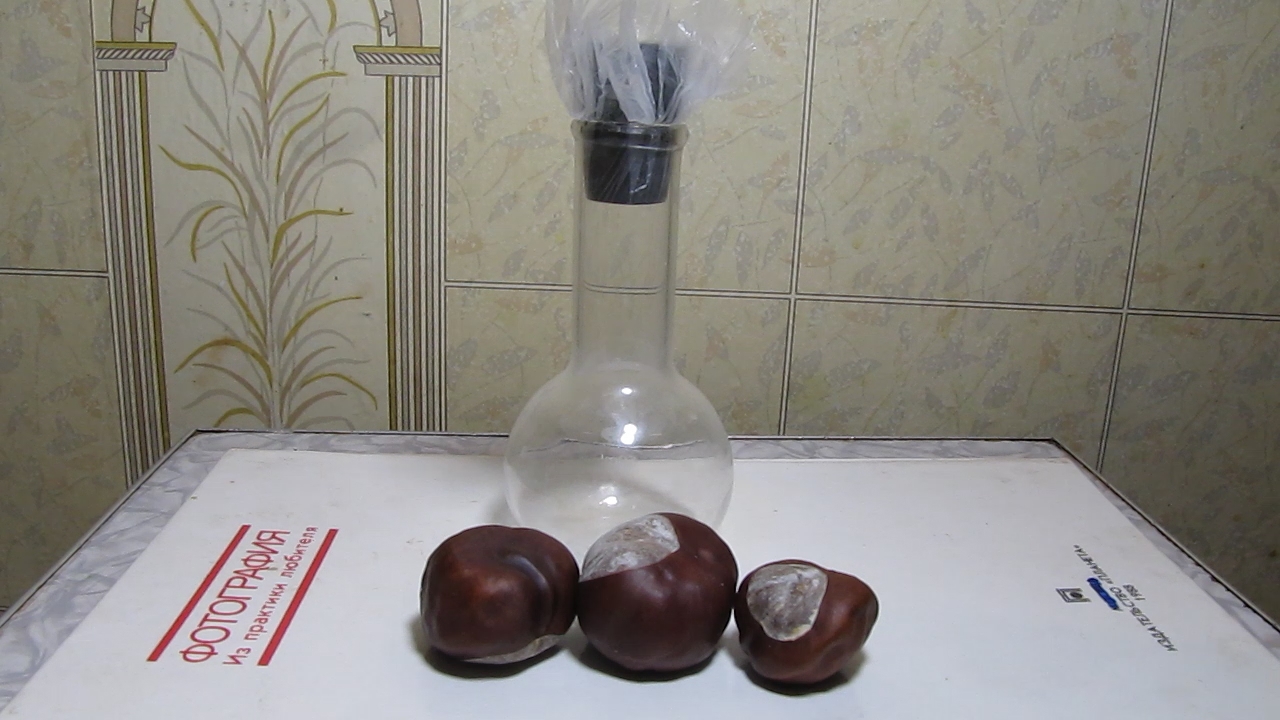
Horse chestnut, ethanol and fluorescence |
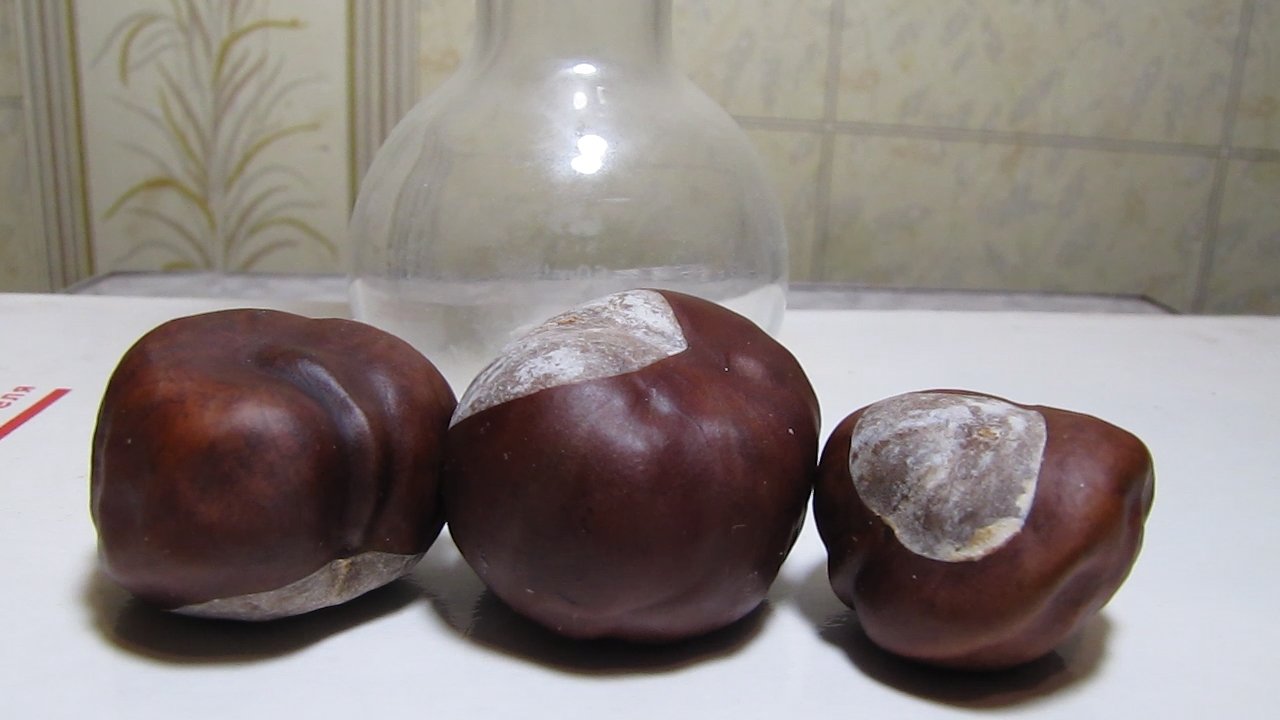
|
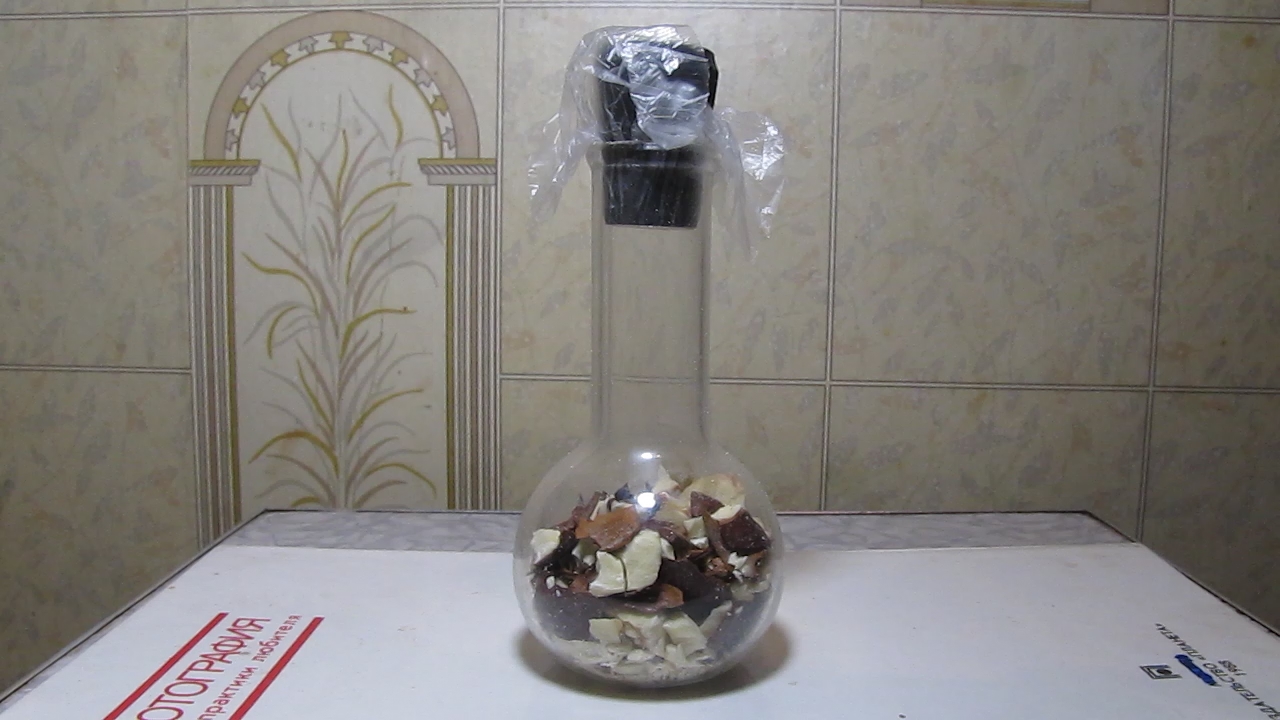
|
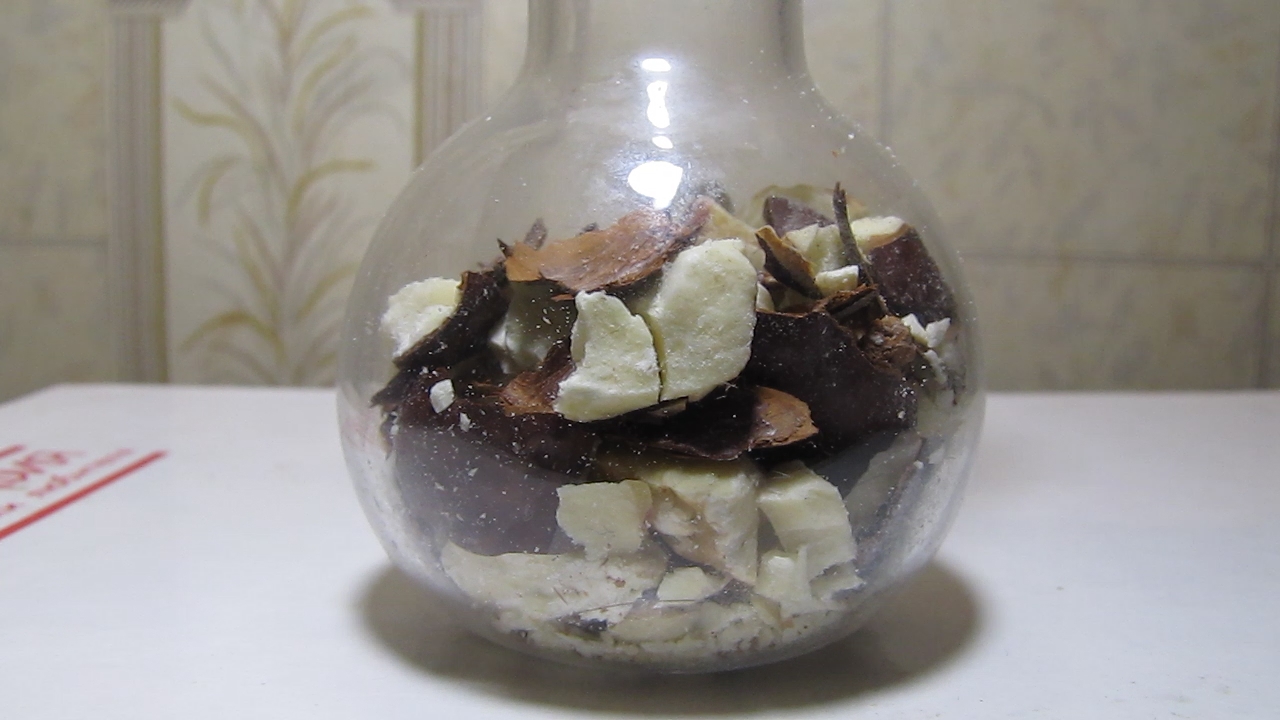
|
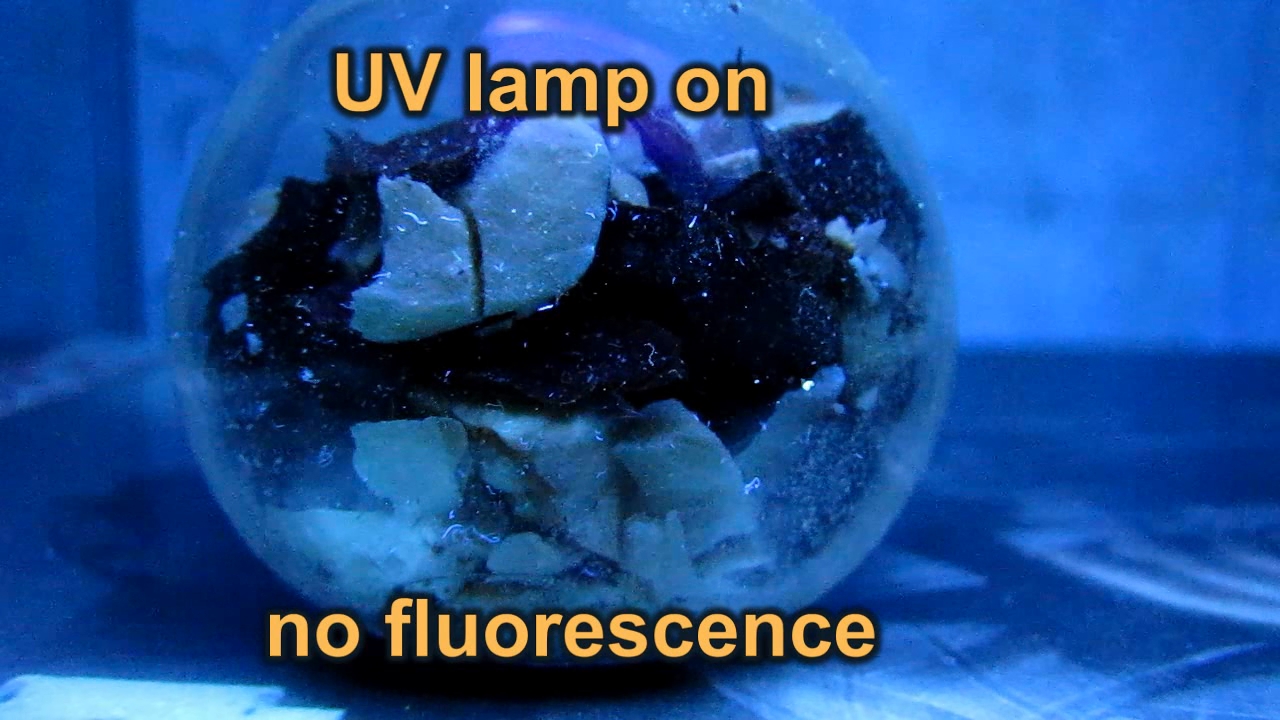
|
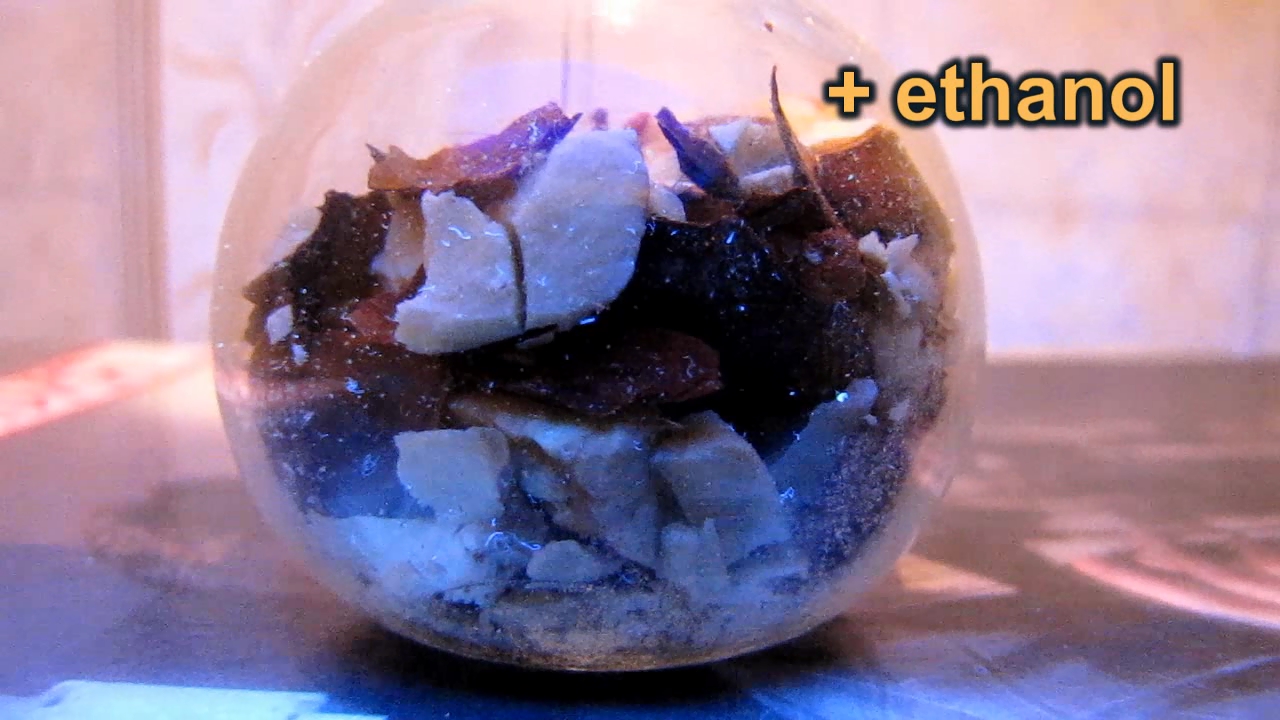
|
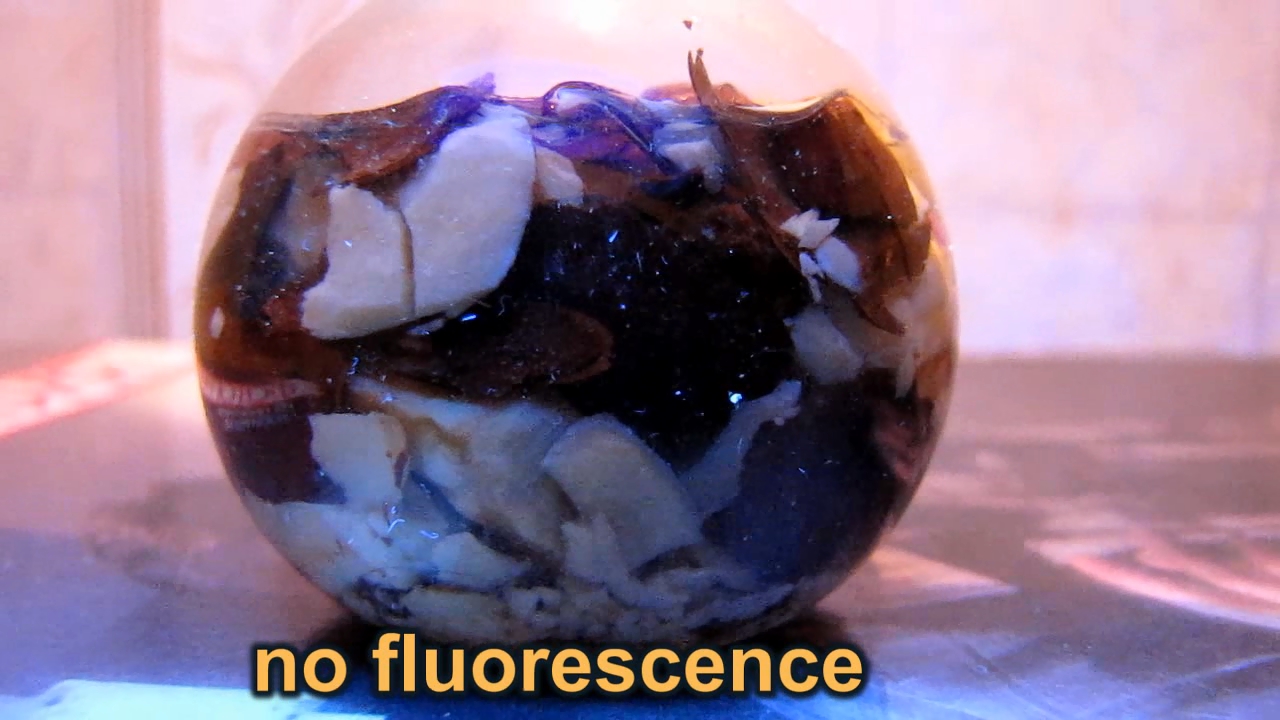
|
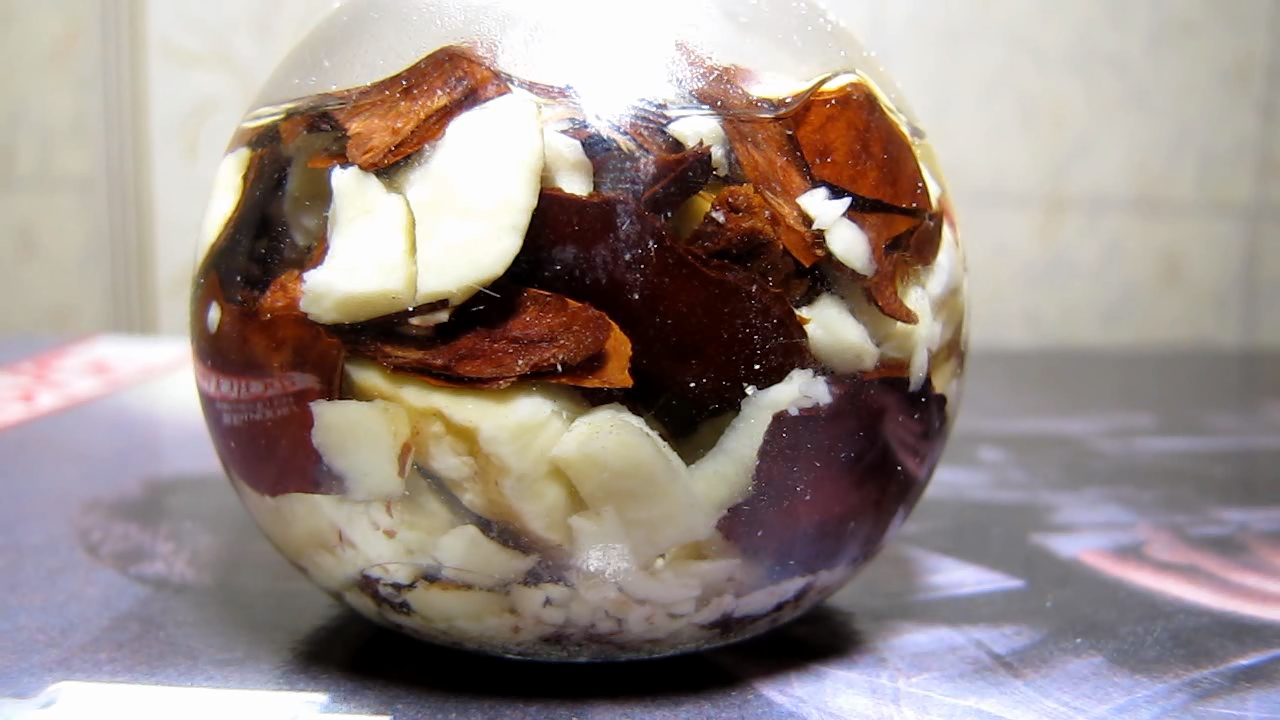
|
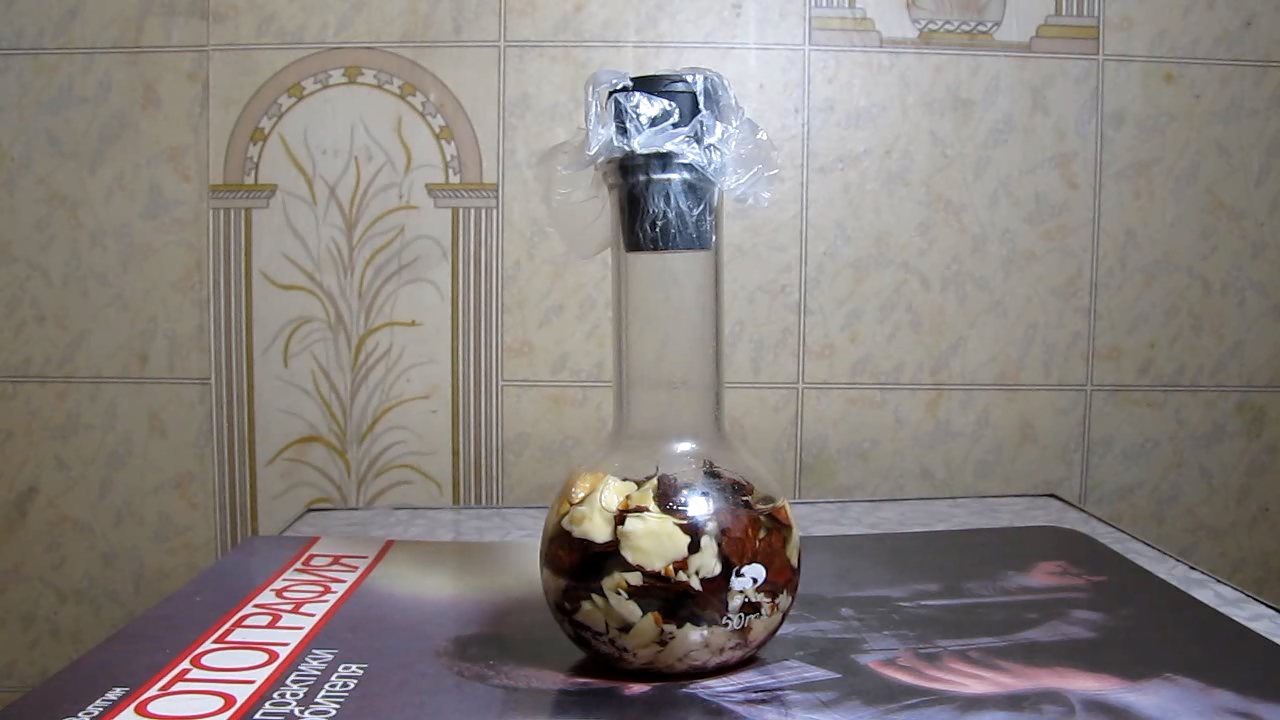
|
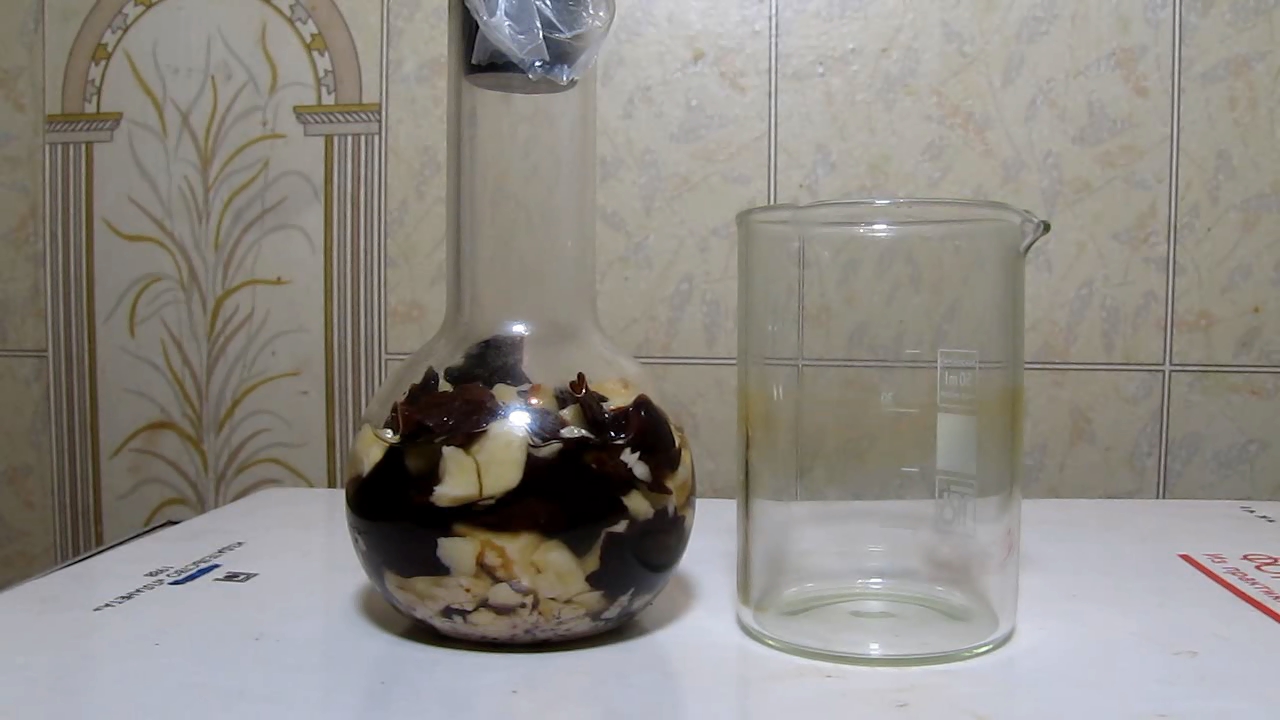
|
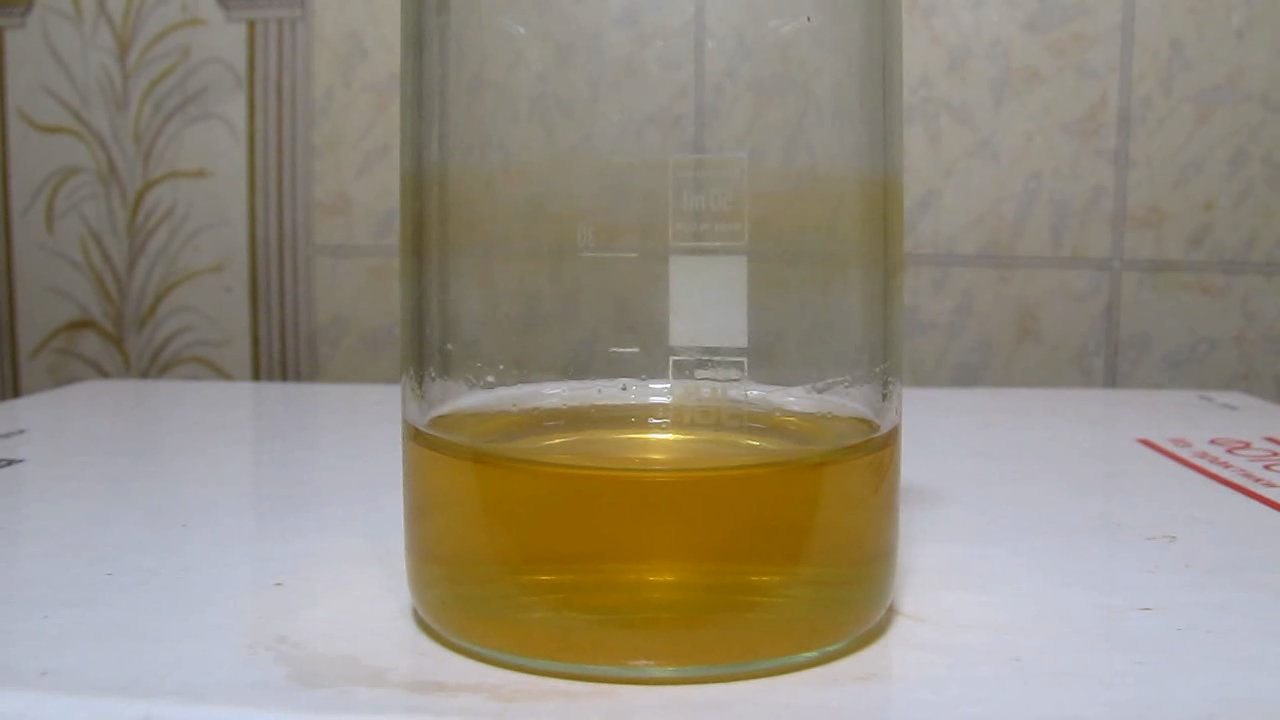
|

|
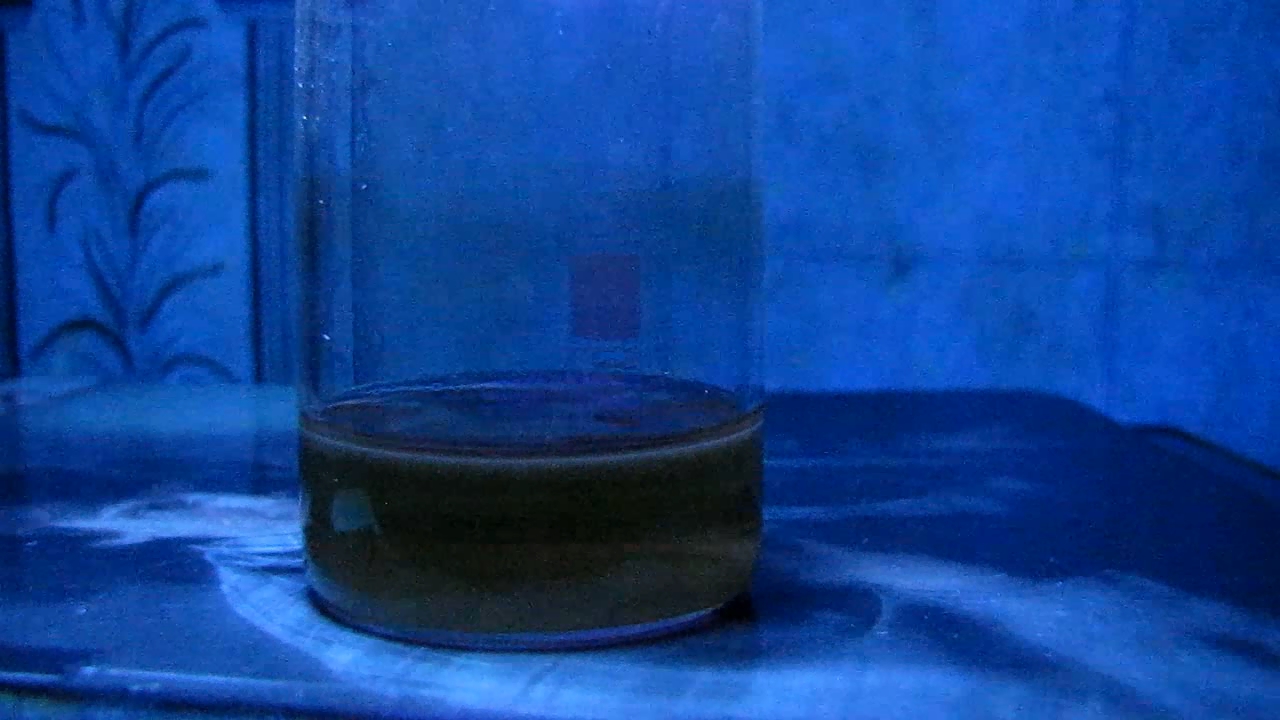
|
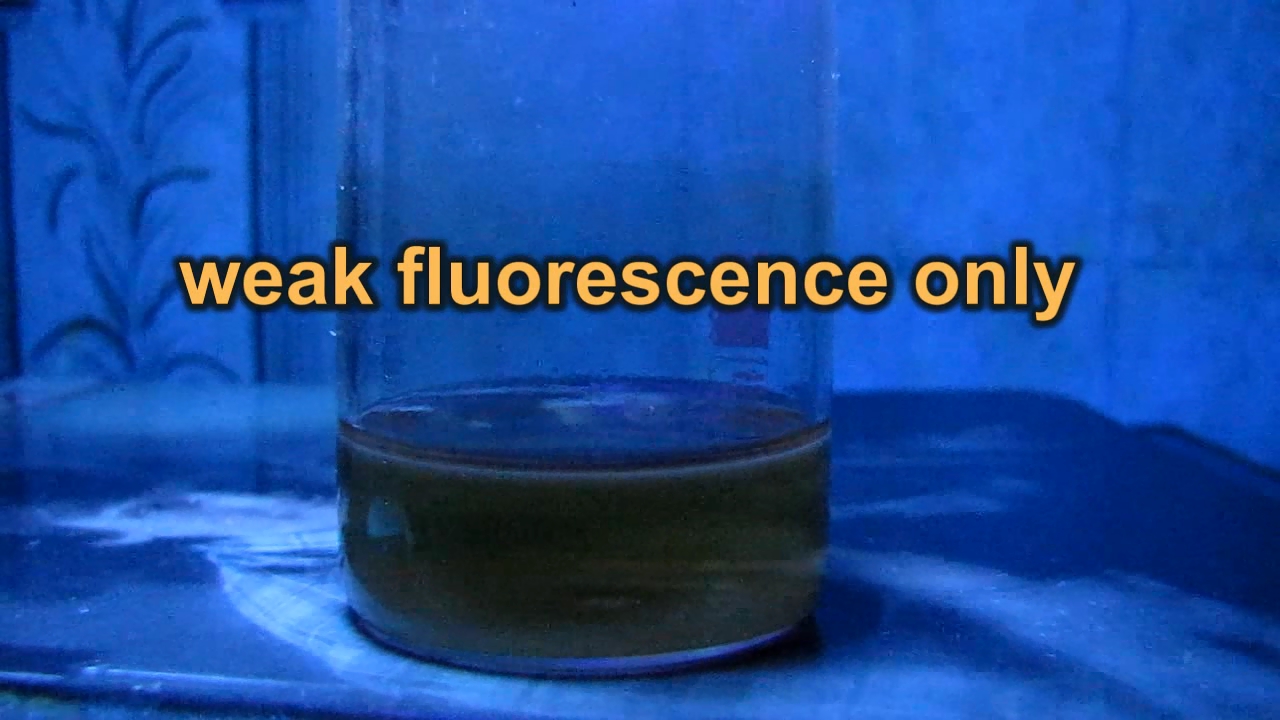
|
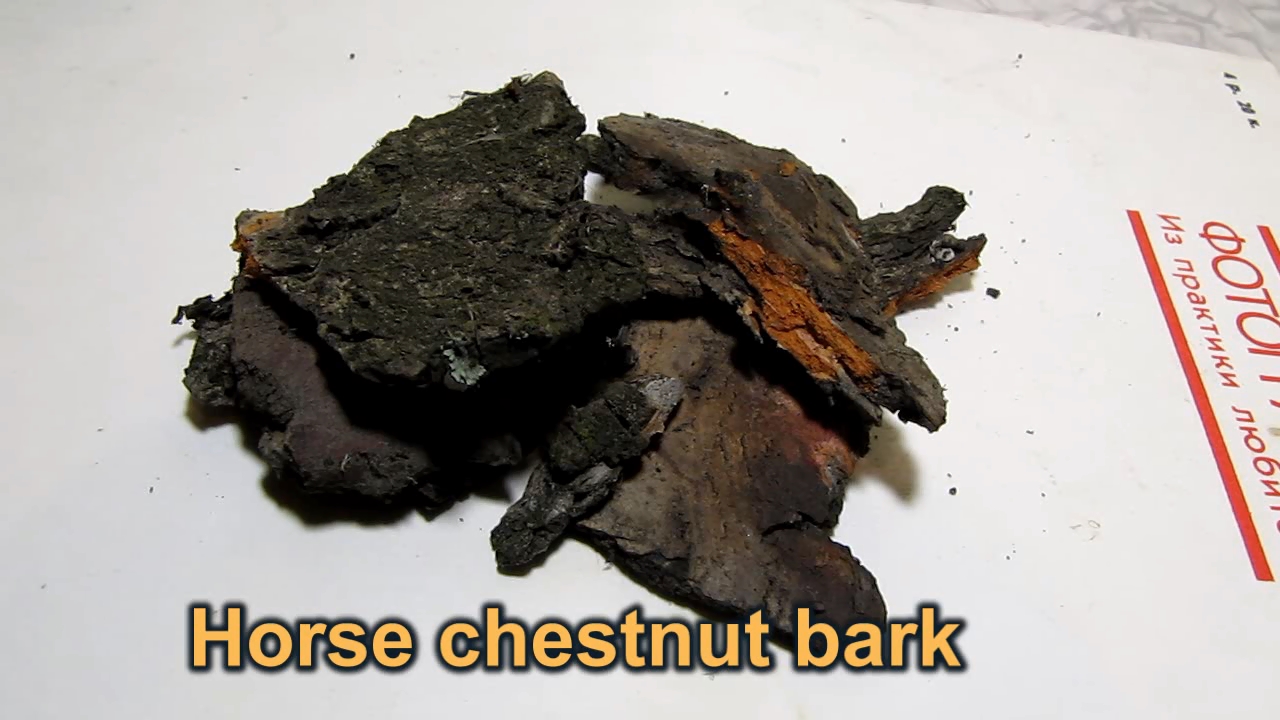
|
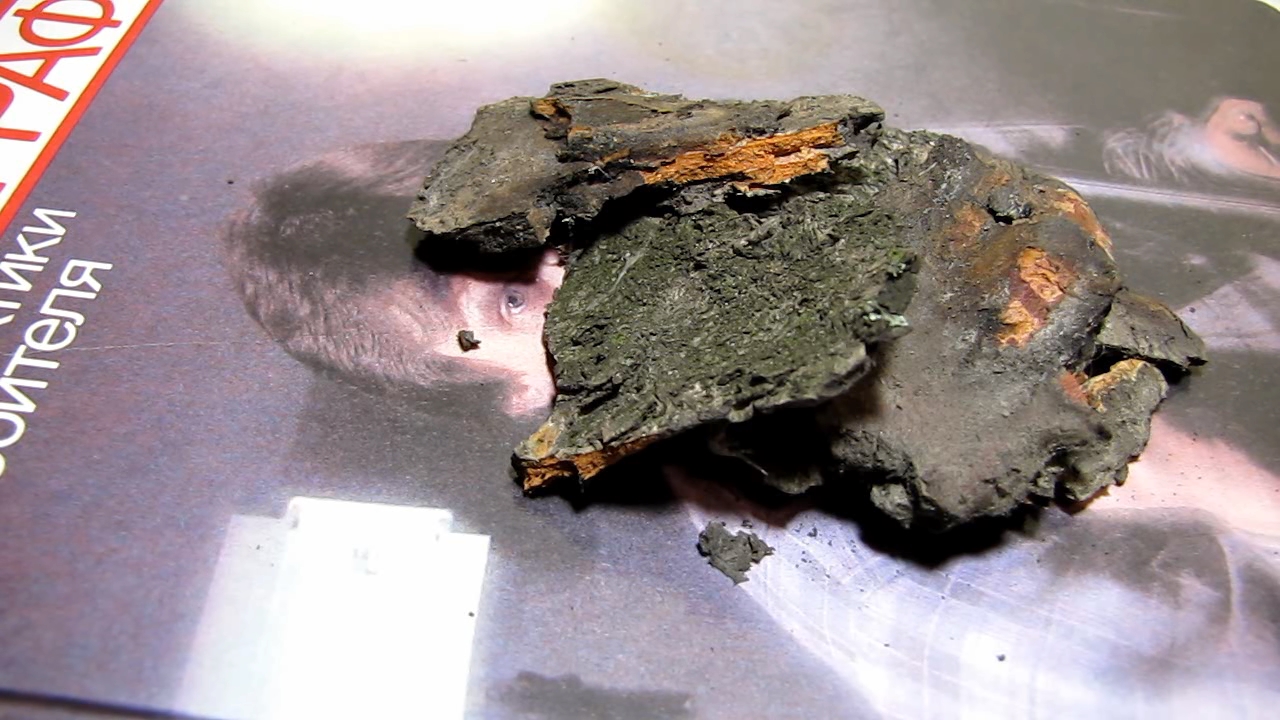
|
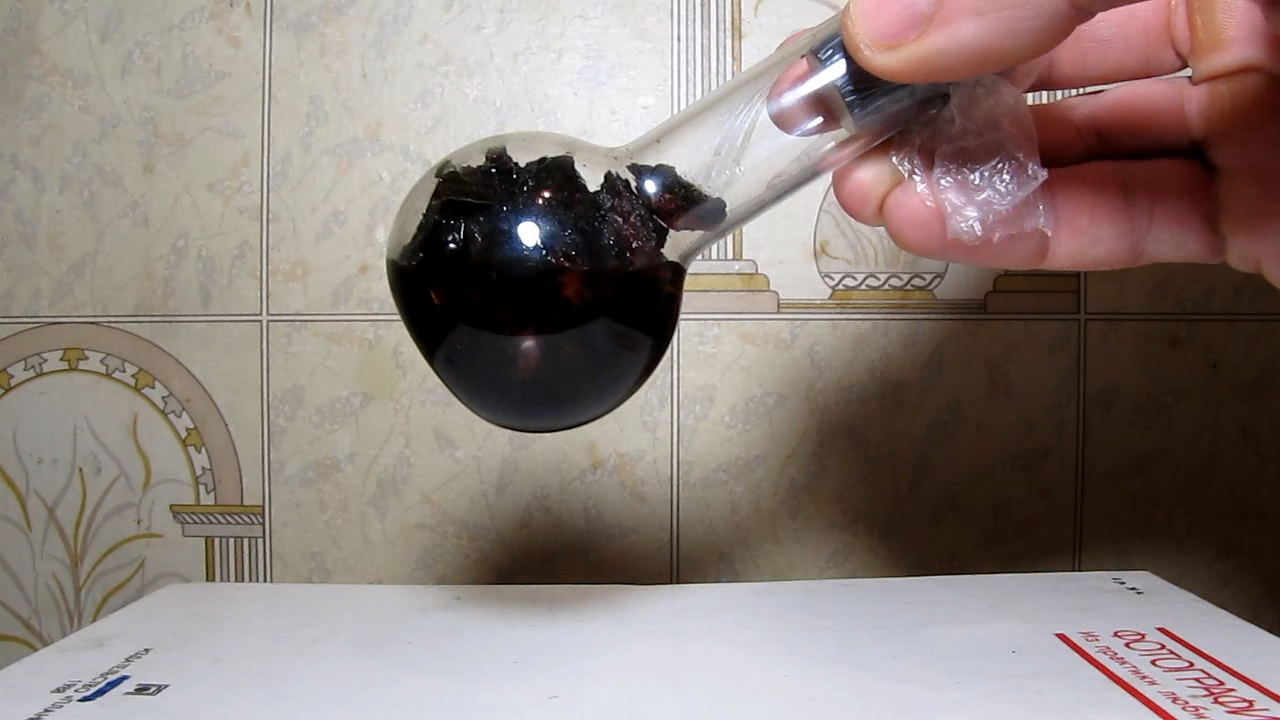
|
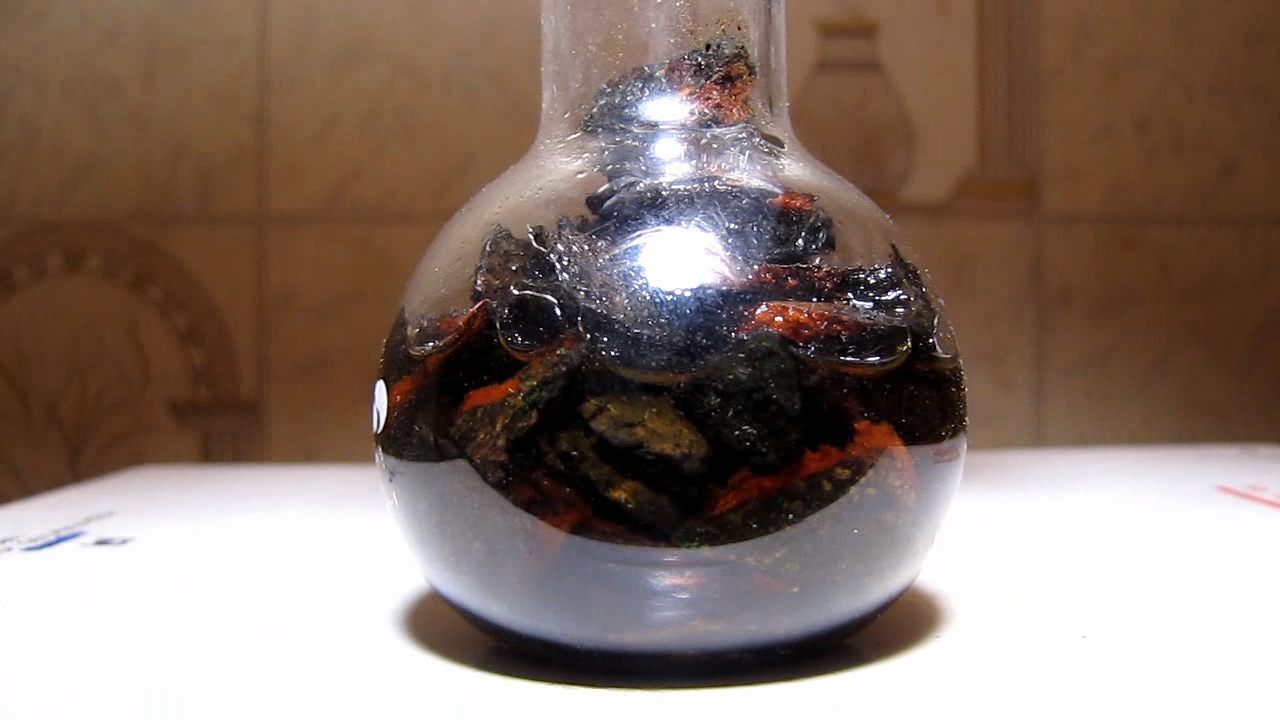
|
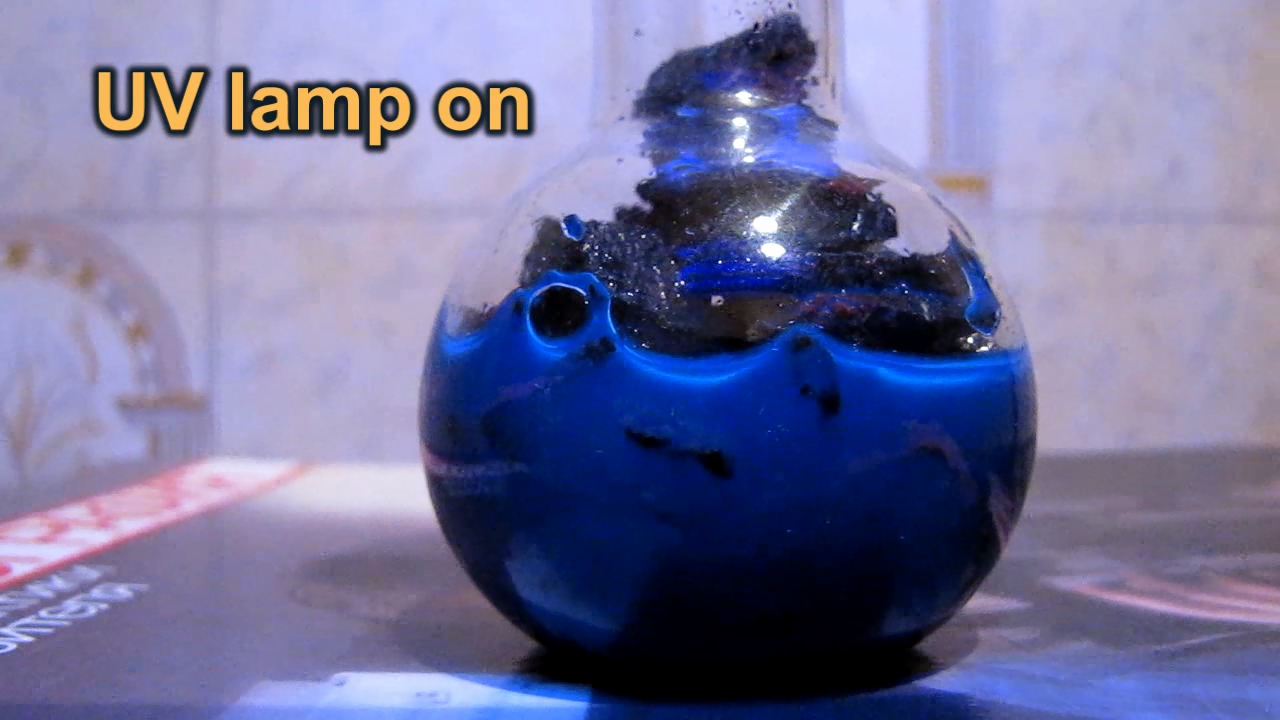
|
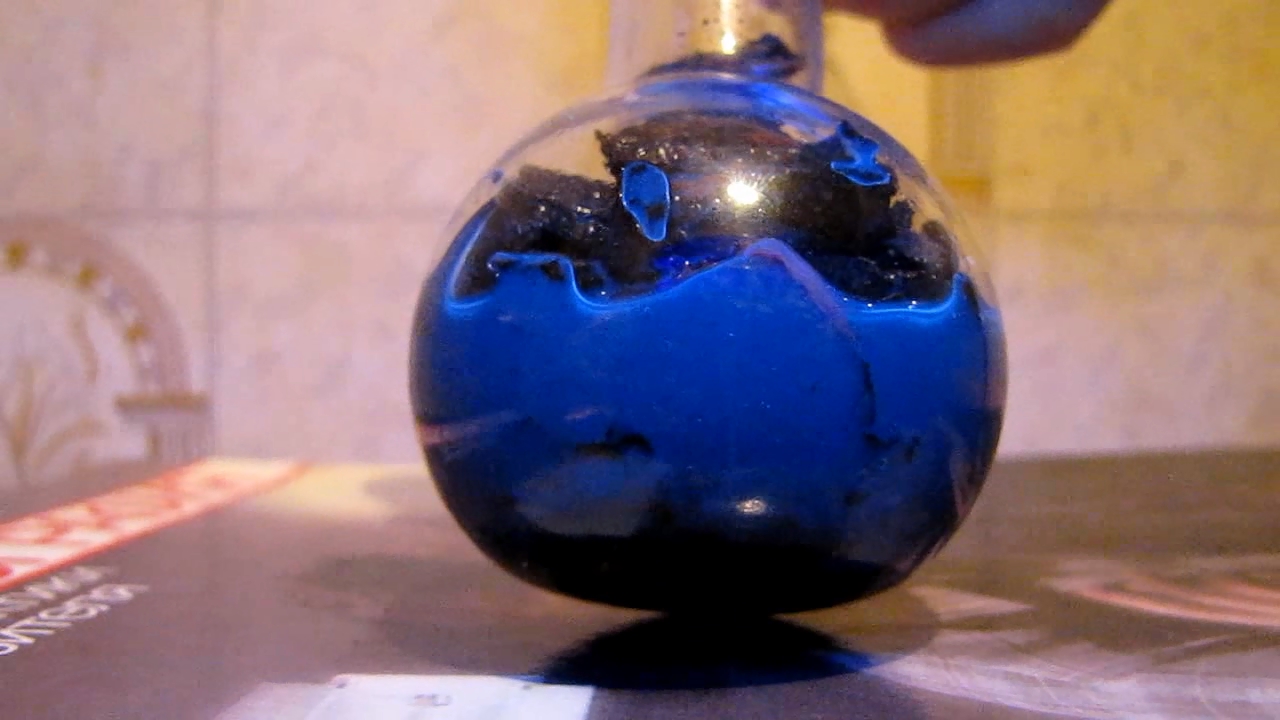
|
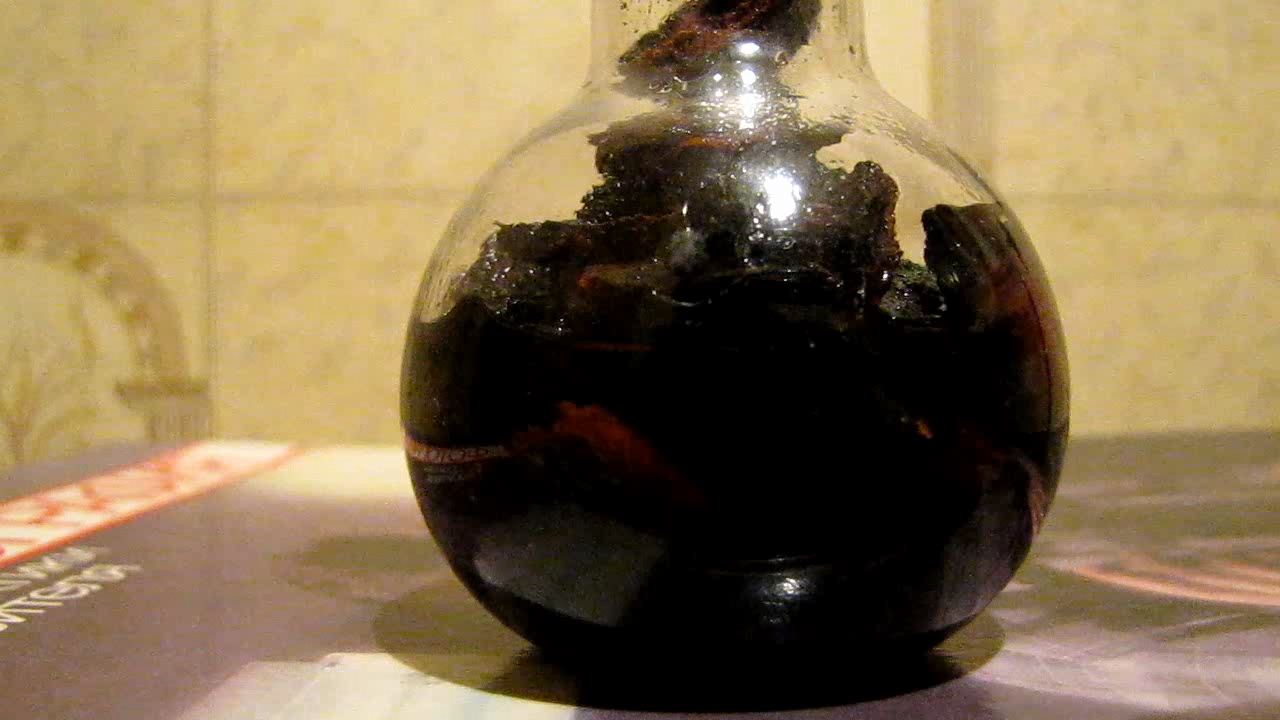
|
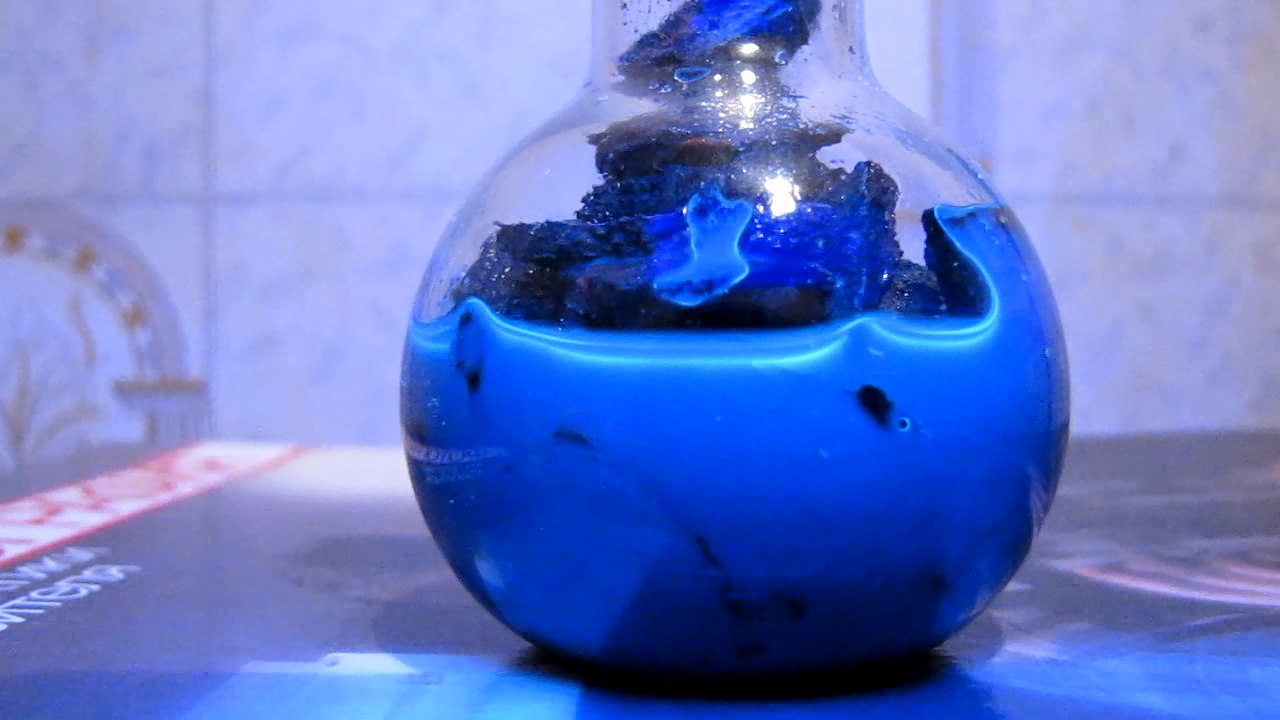
|
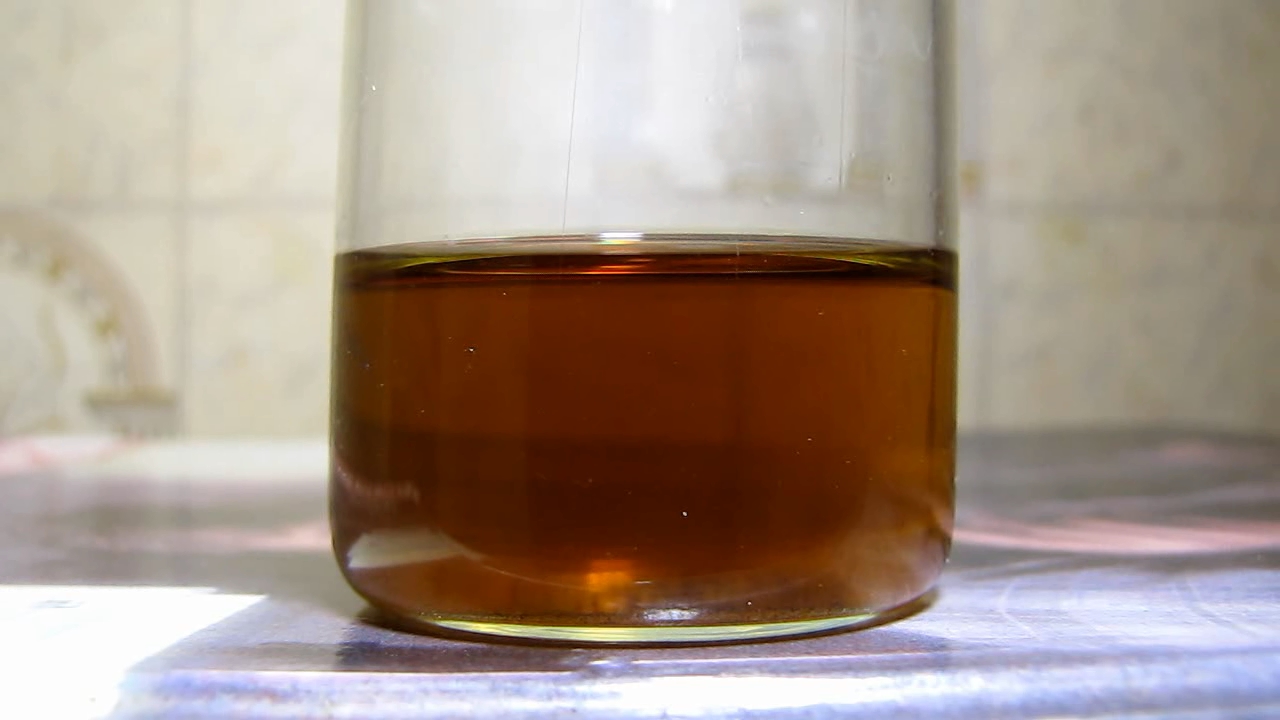
|
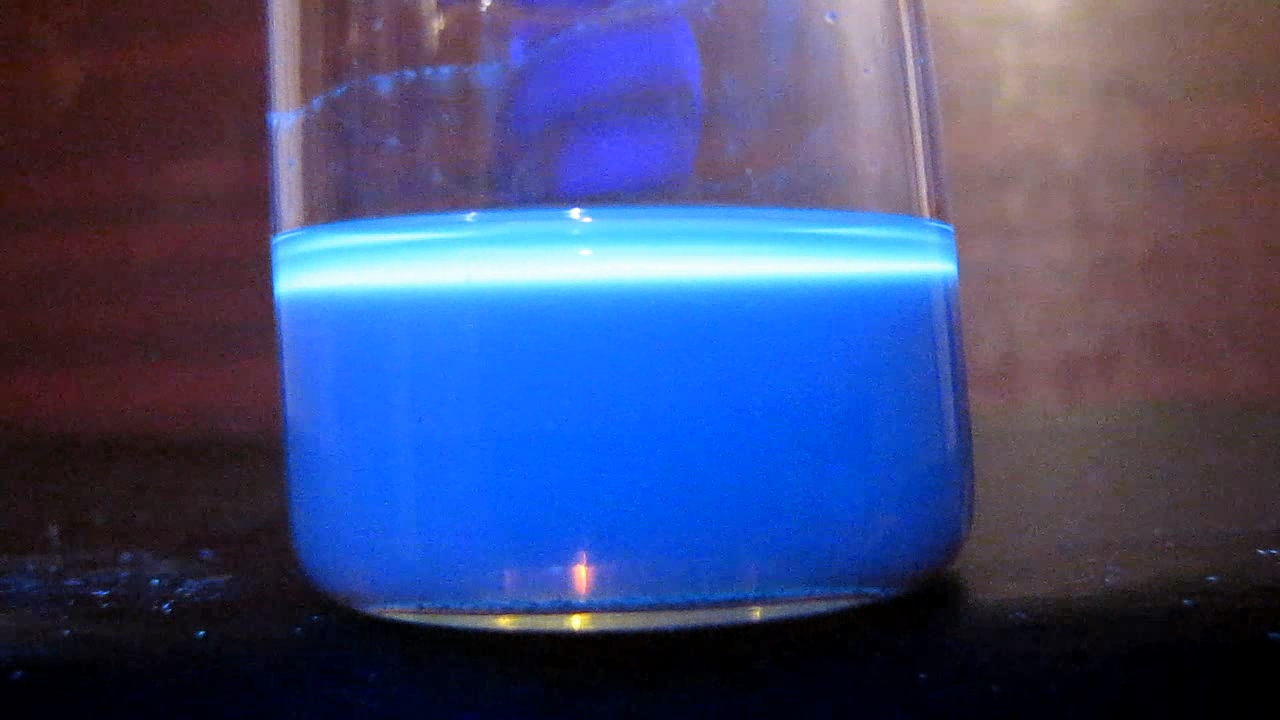
|

|
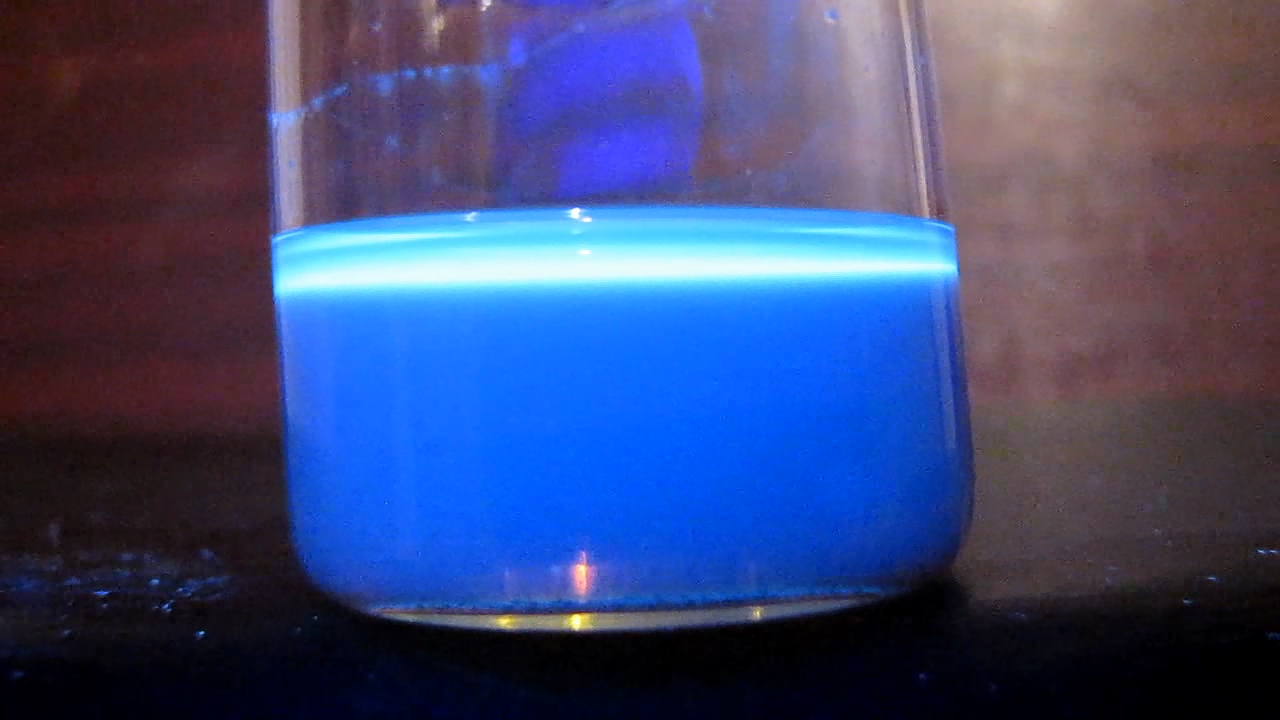
|
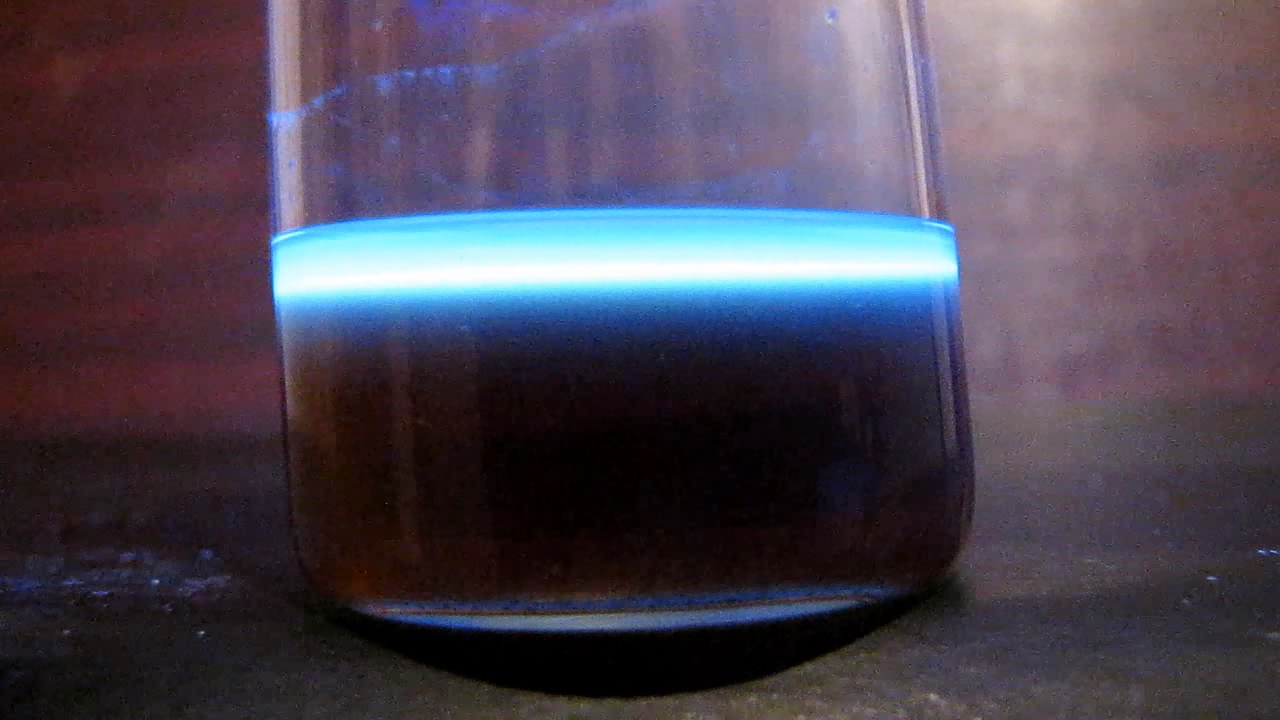
|

|
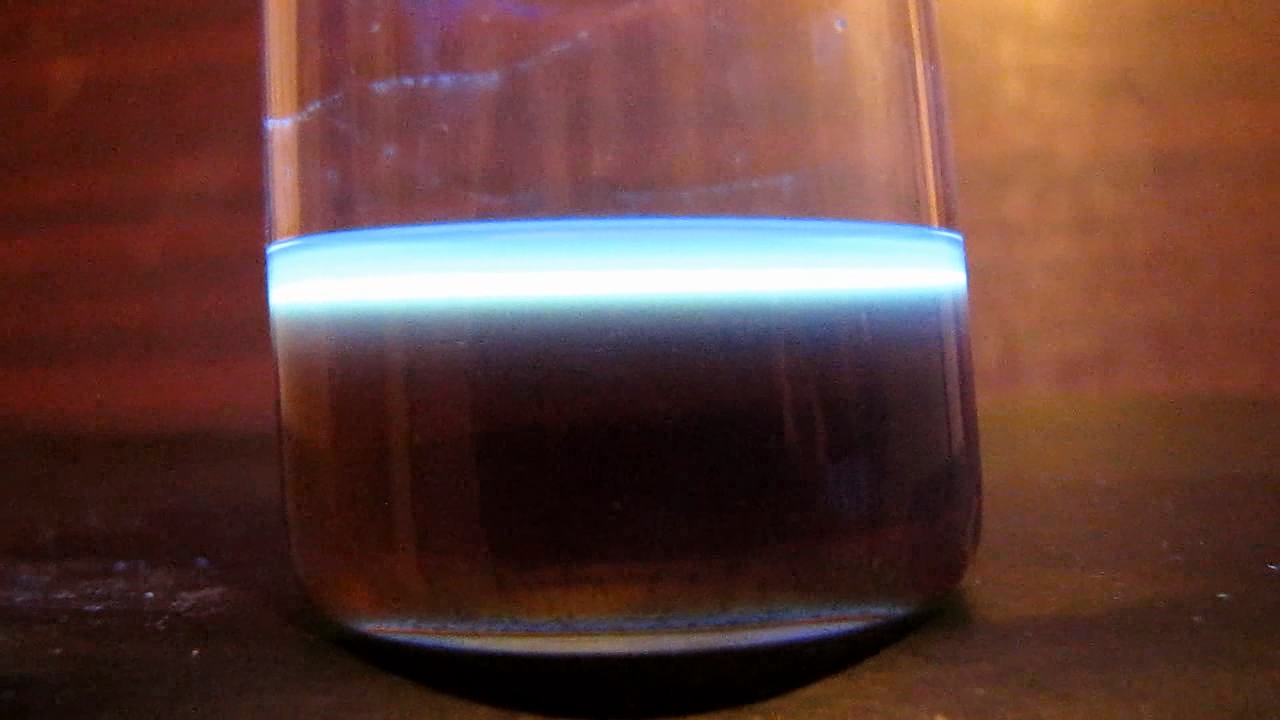
|
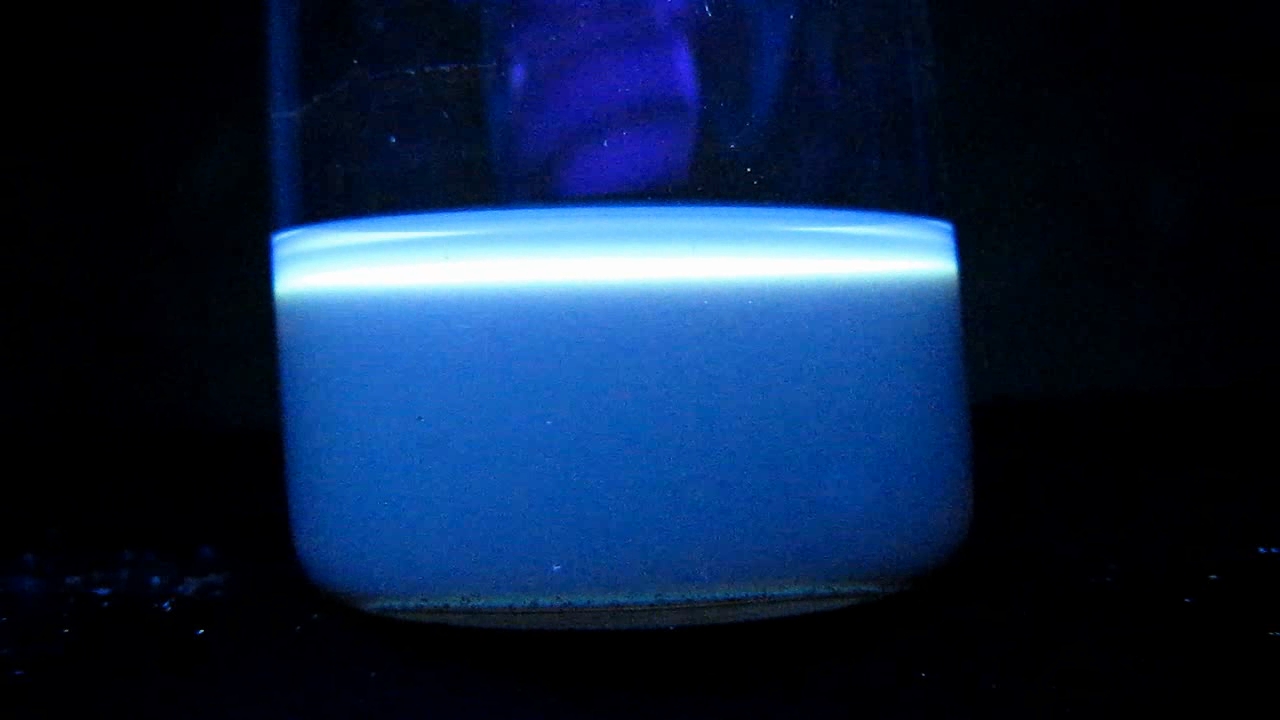
|
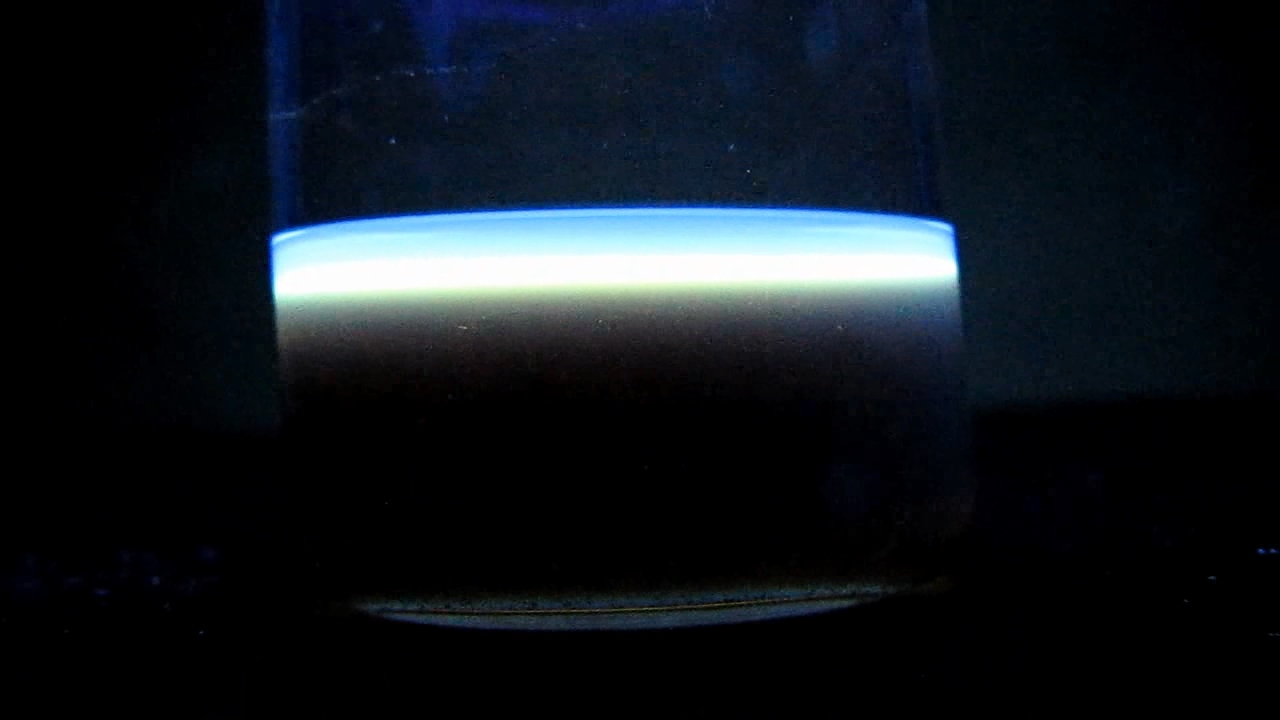
|
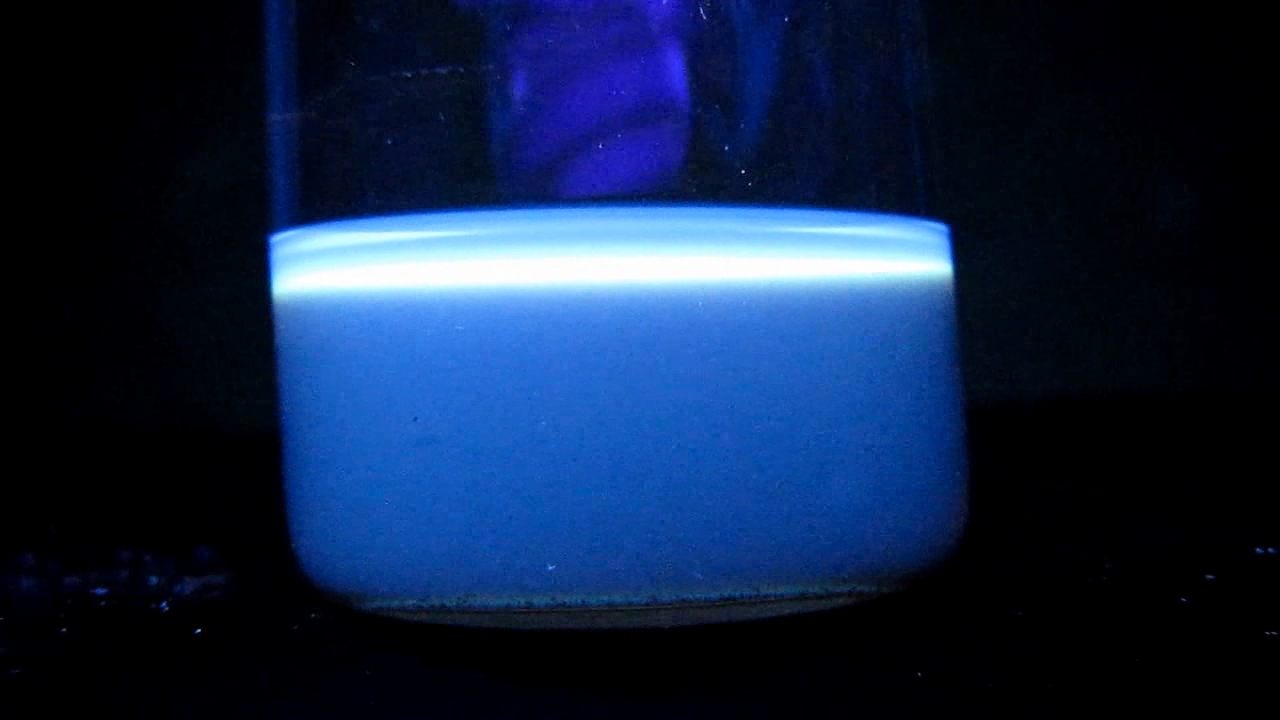
|
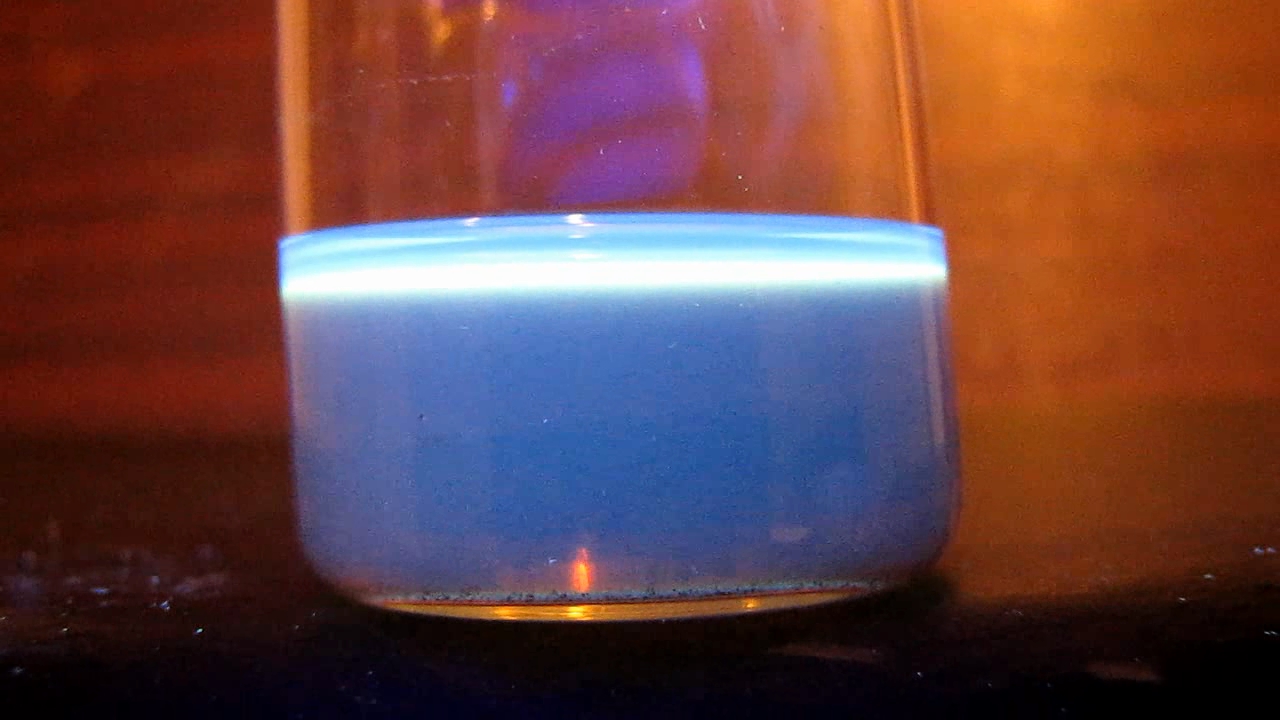
|

|
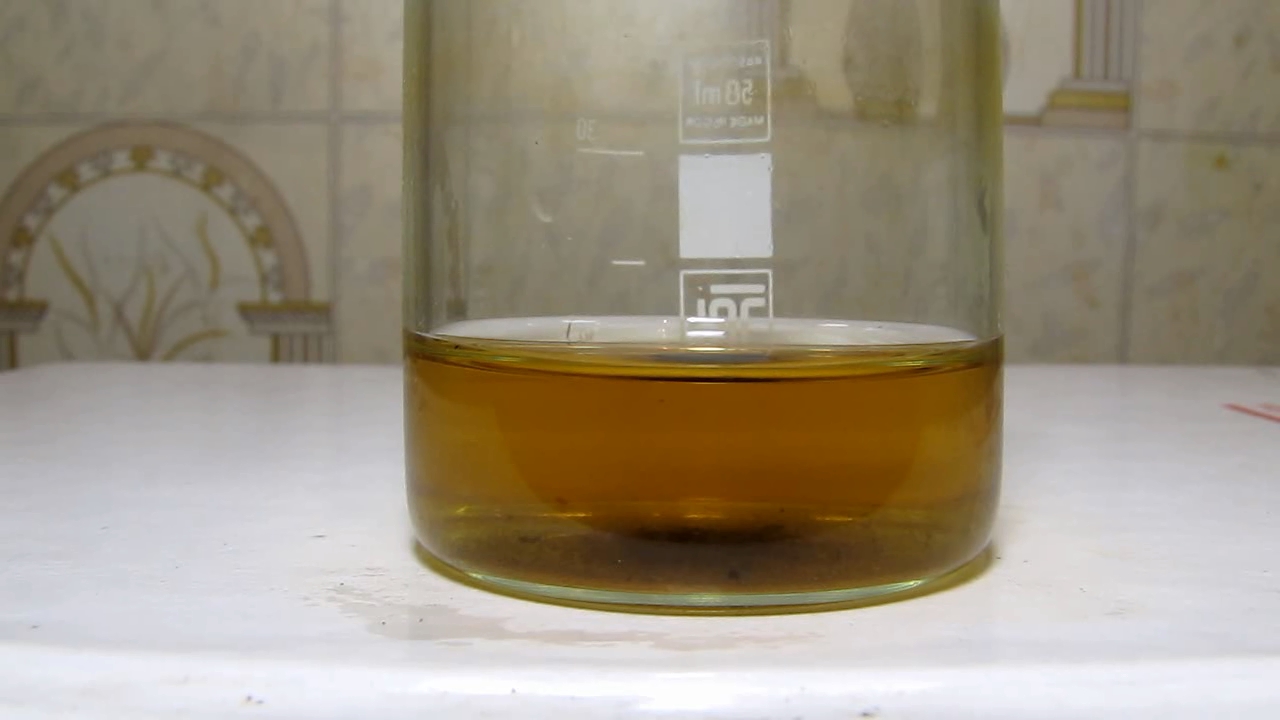
|
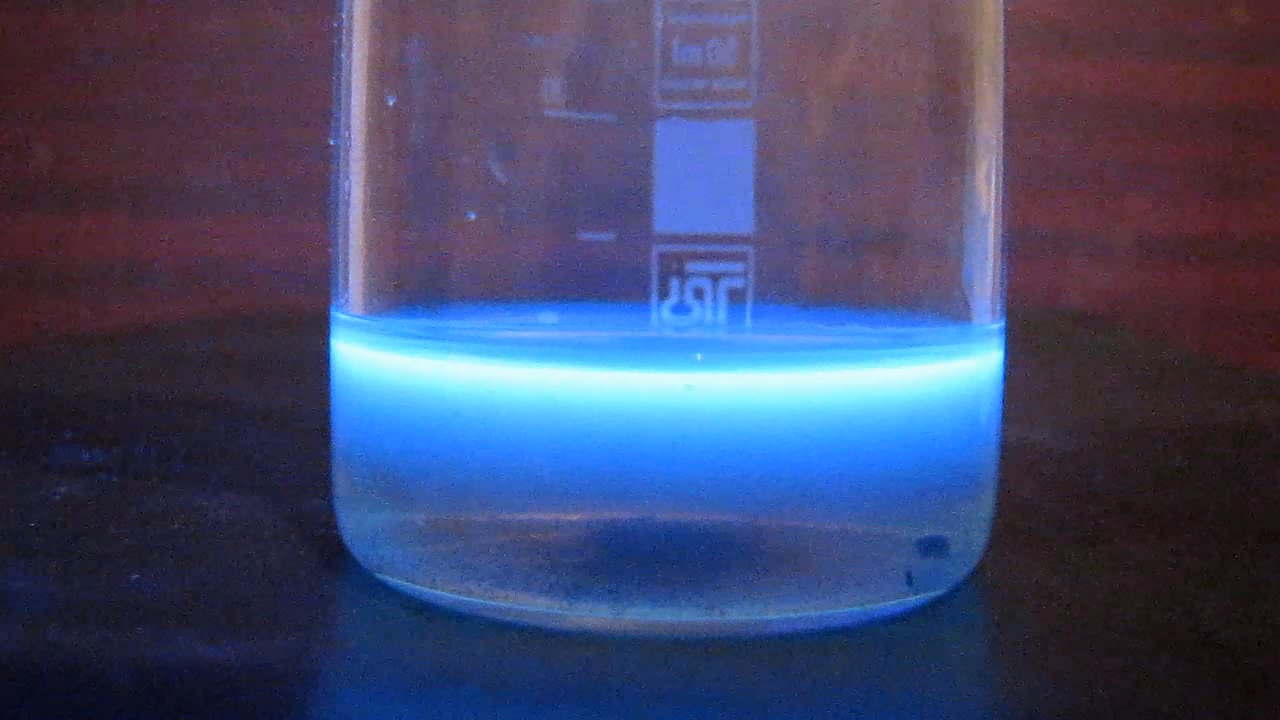
|
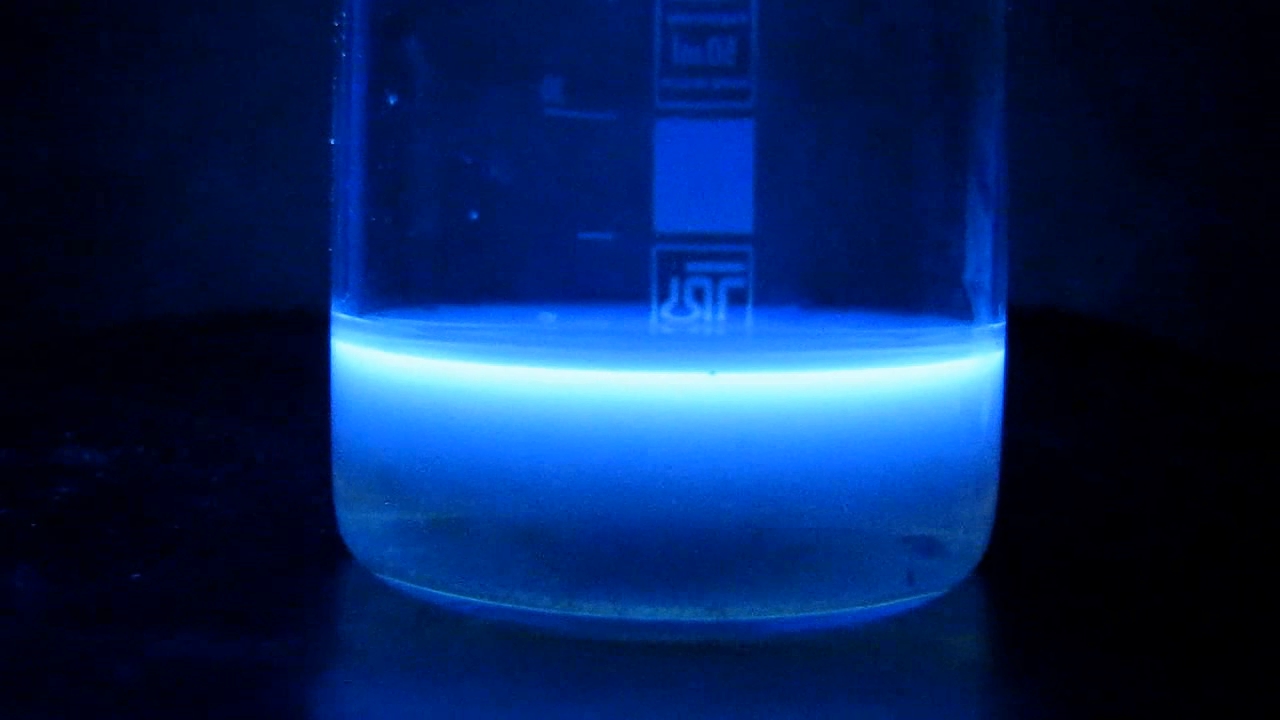
|
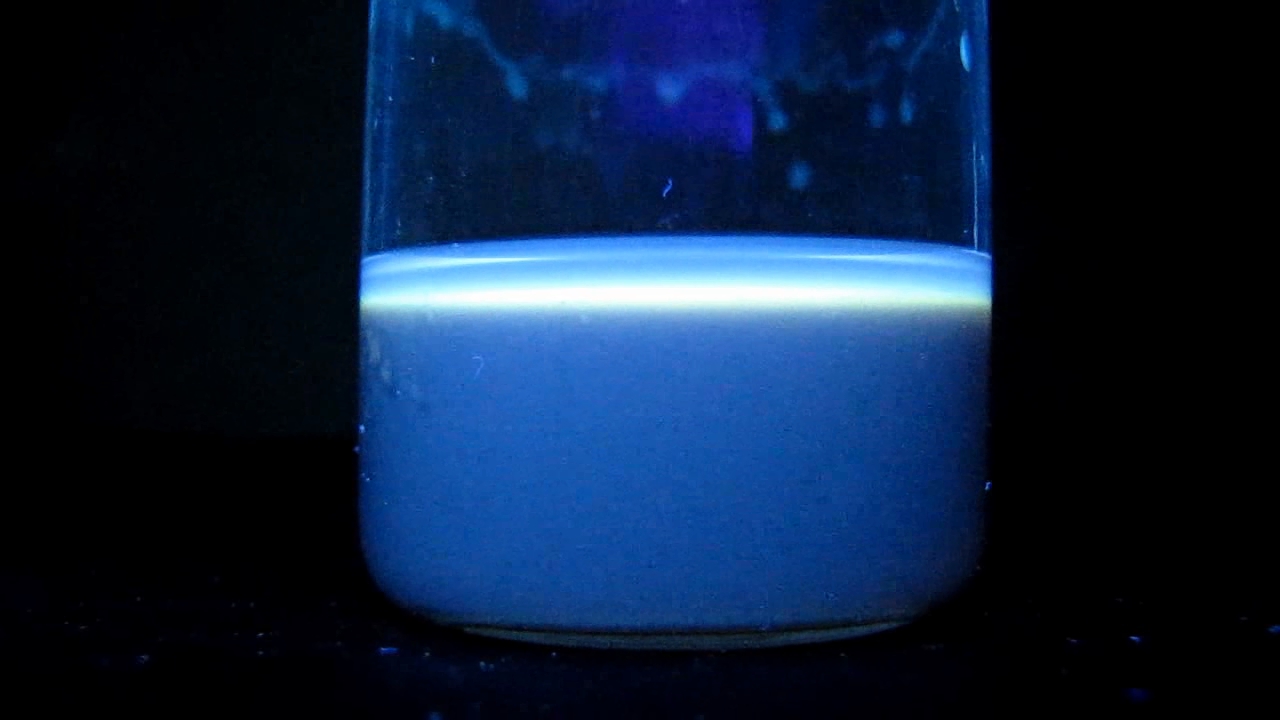
|

|
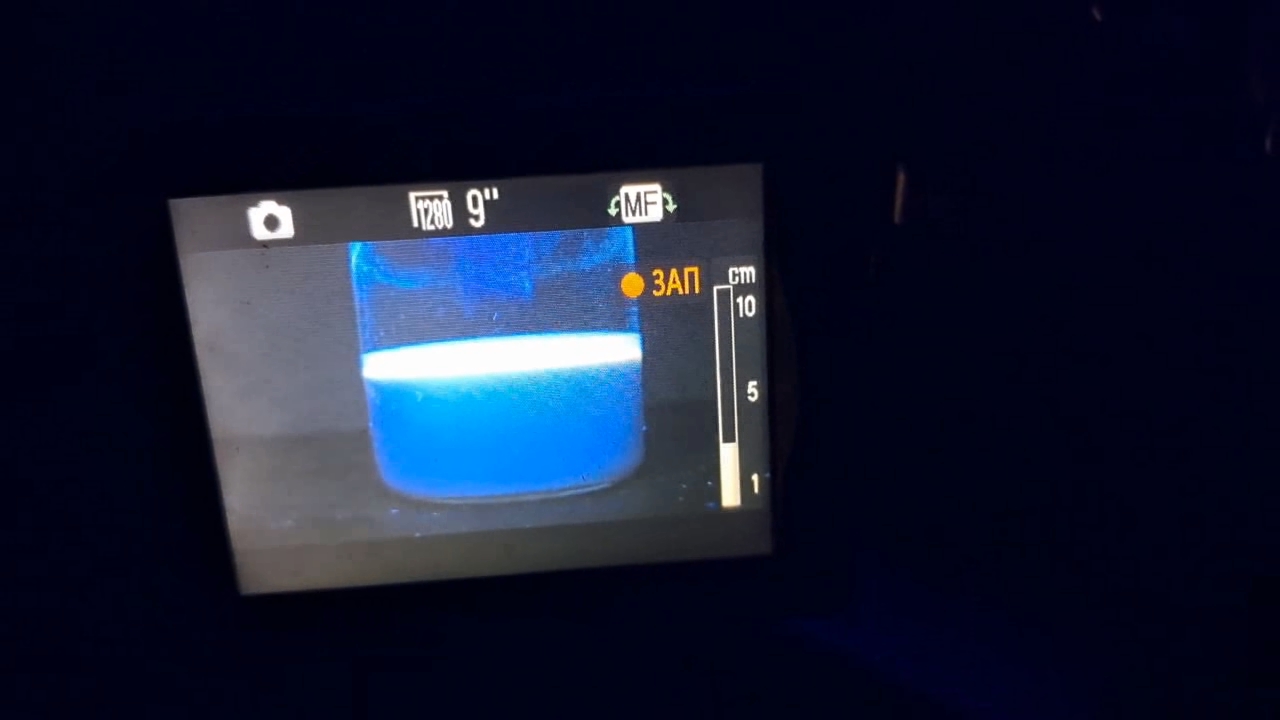
|
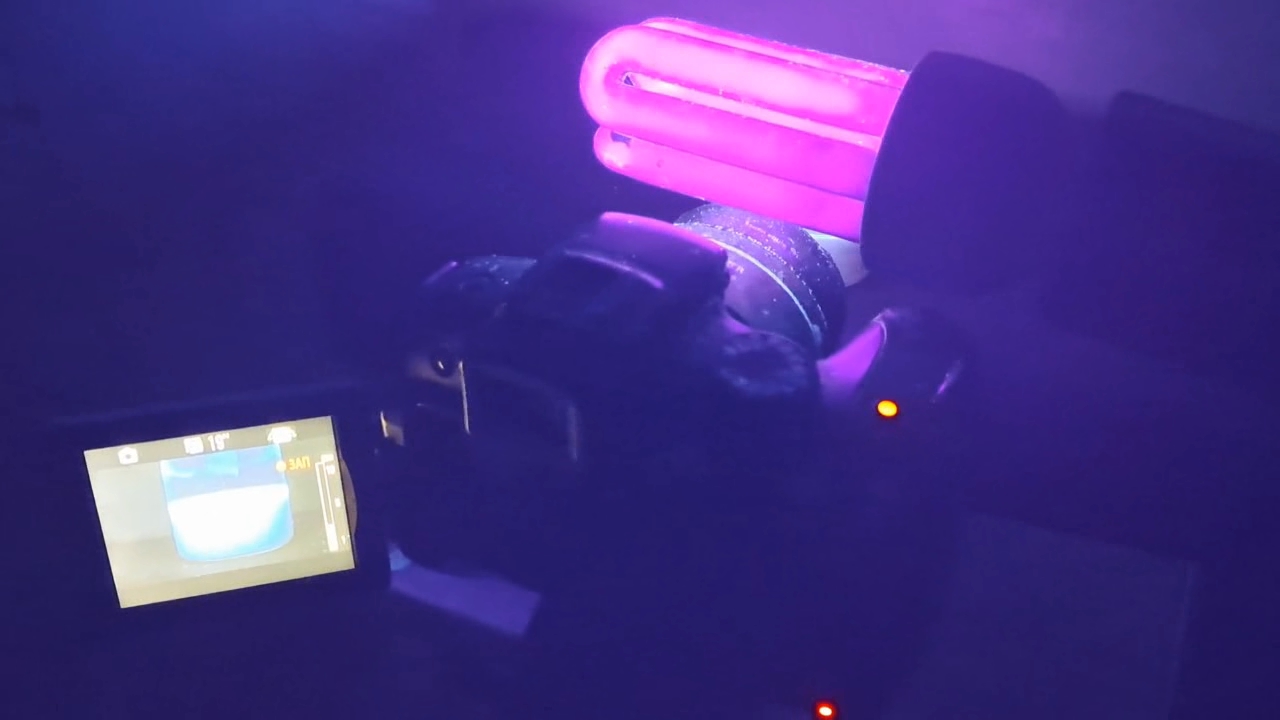
|

|
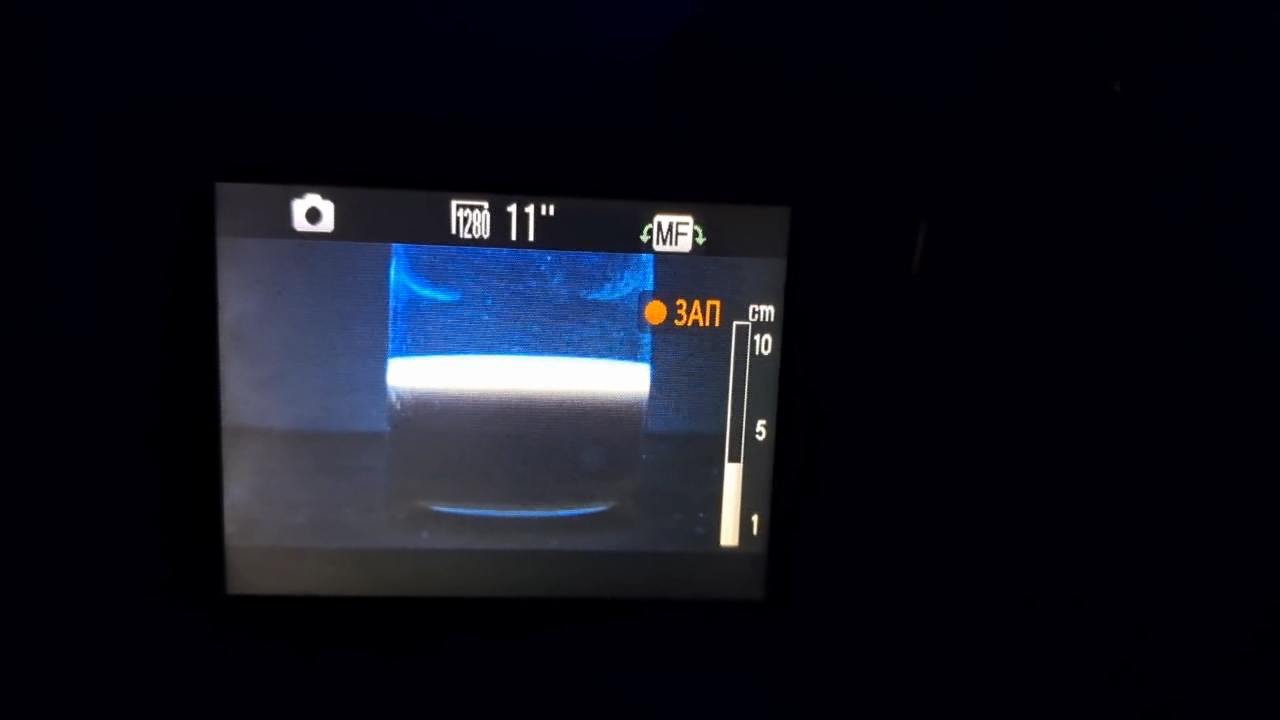
|

|
|
Конские каштаны, этанол и флуоресценция - ч.2
Провести эксперимент со светящимся одеколоном - хорошо. Проблема в том, что другой одеколон, который будет продаваться под таким же названием, может не давать флуоресценцию в ультрафиолетовых лучах. Даже, если на этикетке будет написано: "Одеколон настоян на конском каштане". Верить этикеткам в наше время нельзя. Производители часто обманывают покупателей. Но разве это проблема? Осенью я собрал немного семян конского каштана обыкновенного (Aesculus hippocastanum, horse chestnut). Почему бы их не измельчить и не залить спиртом, чтобы экстрагировать эскулин? Возможно, в семенах содержатся и другие вещества, которые святятся в ультрафиолетовых лучах. Я измельчил два семени каштана, поместил их в колбу и добавил 30 мл этилового спирта (95%). Приблизил к колбе включенную ультрафиолетовую лампу. Результат - ни жидкость, ни кусочки семян конского каштана в колбе НЕ светились. Возможно, необходимо время, чтобы прошла экстракция эскулина? Я уже тогда знал, что это не так. Если семена конского каштана содержат флуоресцентное вещество, свечение спирта станет заметно сразу, в противном случае увеличение времени экстракции не даст существенного результата. Тем не менее, я оставил колбу с семенами и спиртом на сутки. В чем причина неудачи? Постепенно я стал догадываться. Почему я решил, что одеколон был настоян именно на семенах конского каштана? Действительно, у нас собирают семена этого дерева, чтобы приготовить из них спиртовую настойку. Но на этикетке не было указанно, что этот одеколон был настоян именно на семенах конского каштана, а не на древесине, коре или листьях. Возможно, эскулин содержится преимущественно не в семенах, а например, в коре конского каштана. Нашел статью, где излагалась биохимия конского каштана [1]. Оказывается, в семенах конского каштана действительно мало эскулина ("esculin ... is lacking"). Эскулин содержится в коре, древесине, в меньшей мере - в листьях. Для очистки совести проверил колбу со спиртом и семенами конского каштана на следующий день. Под ультрафиолетовой лампой флуоресценции не наблюдалось (ни жидкость, ни кусочки семян не светились). Я перелил экстракт семян в стакан, поместил его под ультрафиолетовый свет. Визуально флуоресценция не наблюдалась. Когда я монтировал видео эксперимента, то заметил, что экстракт семян конского каштана все-таки светился в ультрафиолетовых лучах. Слабое свечение раствора наблюдалось возле поверхности. Флуоресценция была плохо заметна на фоне свечения бумажных обоев. Для подобных экспериментов необходим темный фон, который не дает флуоресценции. Однако, я его не использовал в пробных экспериментах. Если раствор дает яркое свечение, можно обойтись без темного фона. Возможно, с этим раствором можно провести другие эксперименты? Я так не думаю. С досады вылил раствор в раковину. А когда мыл стакан, то обнаружил, что при смешивании воды с остатками экстракта семян конского каштана образовалась... белая эмульсия! Как раз тот результат, который я хотел получить, но не получил, используя одеколон. Не надо было выливать экстракт! Теперь уже ничего не поделаешь! В чем была причина образования эмульсии - я уже понял. В упомянутой статье [1] указывалось, что семена каштанов содержат жирные кислоты (олеиновую, линолевую, пальмитиновую, стеариновую, линоленовую). Эти кислоты явно входят в состав липидов (жиров). Жиры нерастворимы в воде, но некоторые жиры растворимы в спирте. Например, подсолнечное масло не растворяется в спирте [2], зато касторовое масло растворимо в спирте! Вероятно, спирт экстрагировал липиды (и/или другие гидрофобные вещества) из семян каштана, а при добавлении воды они образовали отдельную фазу в виде мелких частиц эмульсии. К эмульсии мы еще вернемся. Сейчас наша цель - флуоресценция. Я аккуратно собрал немного коры конского каштана обыкновенного (так, чтобы не повредить дерево!). Измельчил кору на кусочки и заполнил ними почти полностью колбу на 50 мл, добавил 20 мл этилового спирта (95%). Колбу закрыл и встряхнул. Сразу поднес к ультрафиолетовой лампе. Жидкость в колбе дала яркую голубую флуоресценцию! Свечение эскулина было хорошо видно даже в освещенной комнате, но лучше, разумеется, наблюдать флуоресценцию в темноте. Перелил экстракт коры конского каштана в стакан и заснял его флуоресценцию в ультрафиолетовом свете (в темной комнате на темном фоне). Также оказалось, что экстракт хорошо поглощает ультрафиолетовые лучи. Если освещать стакан сверху, светится только верхняя часть раствора. Свечение проникает вглубь жидкости буквально на несколько миллиметров. Глубже ультрафиолетовые лучи не проникают в жидкость, и флуоресценция не происходит. Чтобы вызывать флуоресценцию красителя в более глубоких слоях, стакан нужно освещать сбоку. Аналогичный эффект наблюдается и в случае водного раствора флуоресцеина (натриевая или аммонийная соль). Параллельно попробовал снимать эксперимент не только с помощью старого фотоаппарата, но и с помощью смартфона. Неожиданно обнаружил интересный эффект. Комната визуально казалась почти темной, она выглядела почти темной на и снимках, сделанных фотоаппаратом. Но на экране смартфона и на снятых смартфоном фотографиях комната выглядела залитой яркими красновато-фиолетовыми лучами! Видимо, чувствительность матрицы смартфона к мягкому ультрафиолетовому излучению выше (чем чувствительность глаза или моего фотоаппарата). Зато само свечение раствора выглядело более тусклым - его наблюдению мешал яркий лучистый фон. Теперь вернемся к эмульсии. Логичным было бы приготовить новый экстракт семян конского каштана, чтобы потом добавить его к воде и получить эмульсию. Но для начала я решил использовать экстракт коры. Добавил каплю этого экстракта в стакан с водой. Надежда, что образуется эмульсия, была, но она была слабой. Вряд ли кора конского каштана содержит существенное количество липидов. Действительно, эмульсии не получилось. Раствор остался прозрачным. К счастью, у меня осталось одно семя каштана. Я его частично очистил его от коричневой оболочки, измельчил и поместил на сутки в этиловый спирт. Экстракт коры залил назад в колбу с корой, добавил еще этанола и оставил стоять до следующего дня. На следующий день снял несколько видео флуоресценции эскулина, надеясь получить более качественные ролики, потом переключился на эксперименты с эмульсией. Коллега посоветовал мне добавить к раствору эскулина кислоту, щелочь и соли разных металлов, чтобы проверить, не гасят ли они флуоресценцию. К 10 мл экстракта эскулина добавил 1 мл соляной кислоты (концентрированной). Я читал, что в результате гидролиза эскулина флуоресценция исчезает. Однако после 24 часов действия соляной кислоты раствор сохранил способность к флуоресценции в ультрафиолетовом свете. |
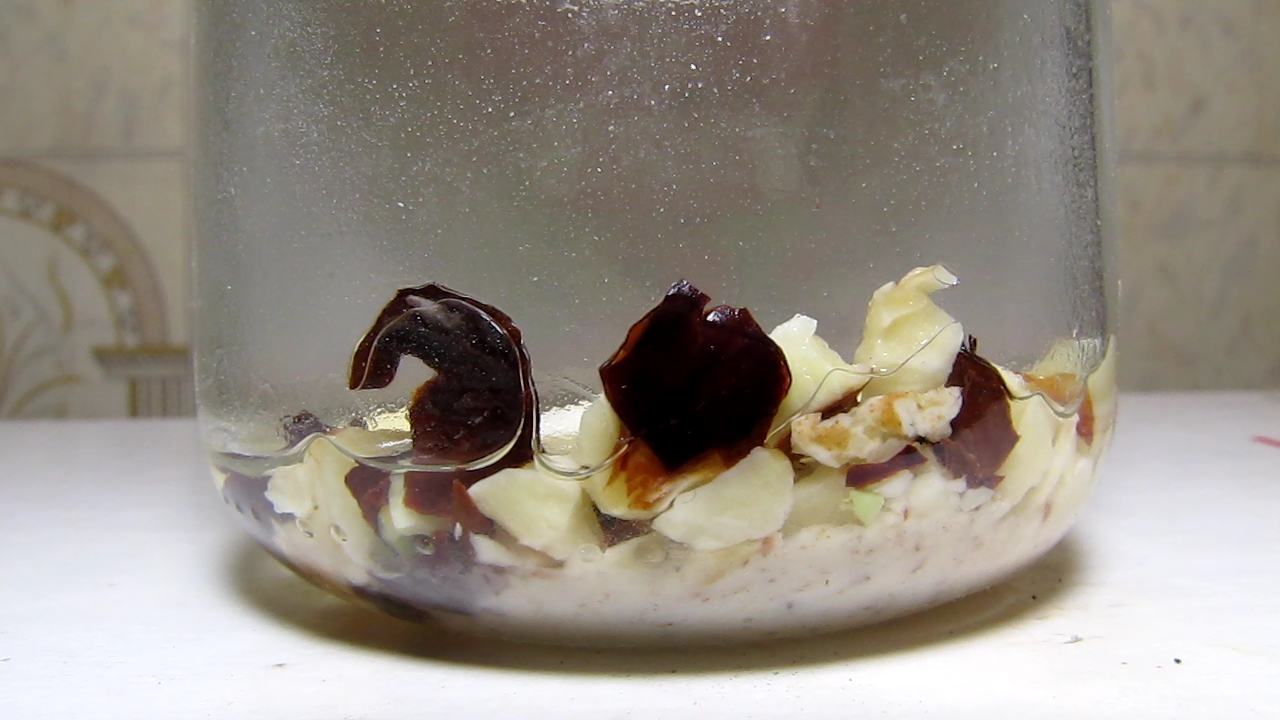
Horse chestnut, ethyl alcohol and formation of the emulsion |
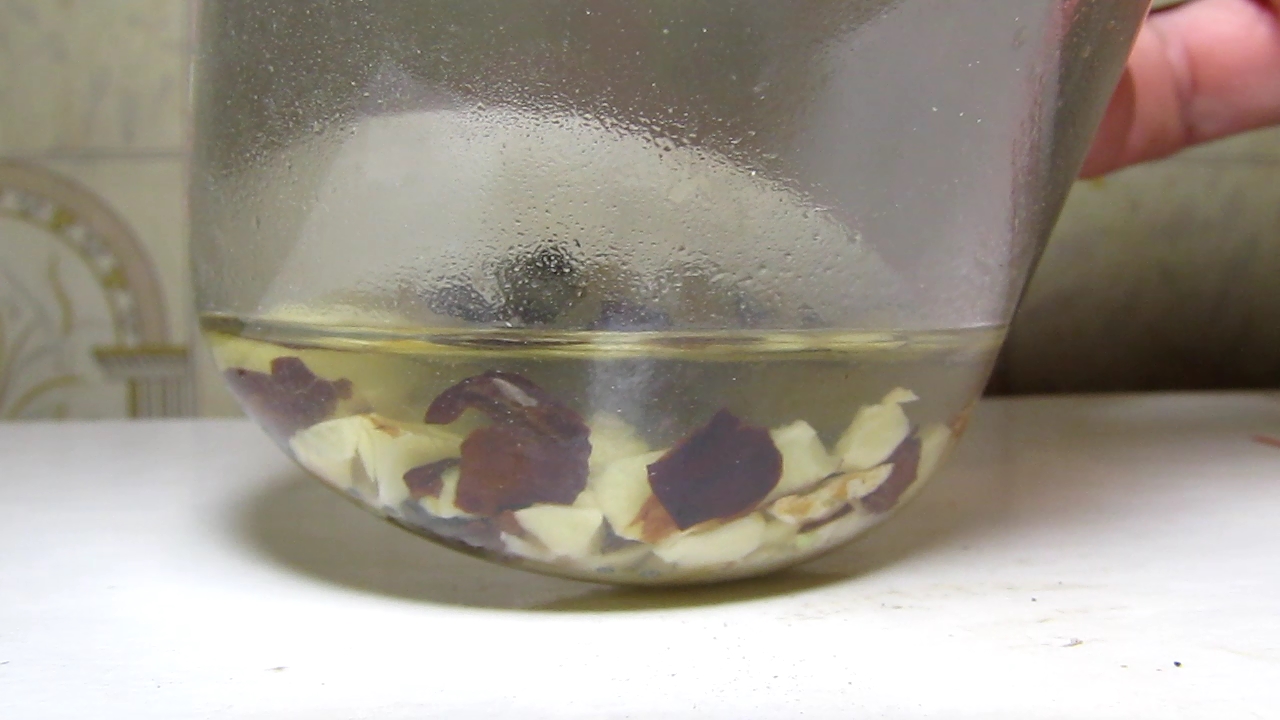
|
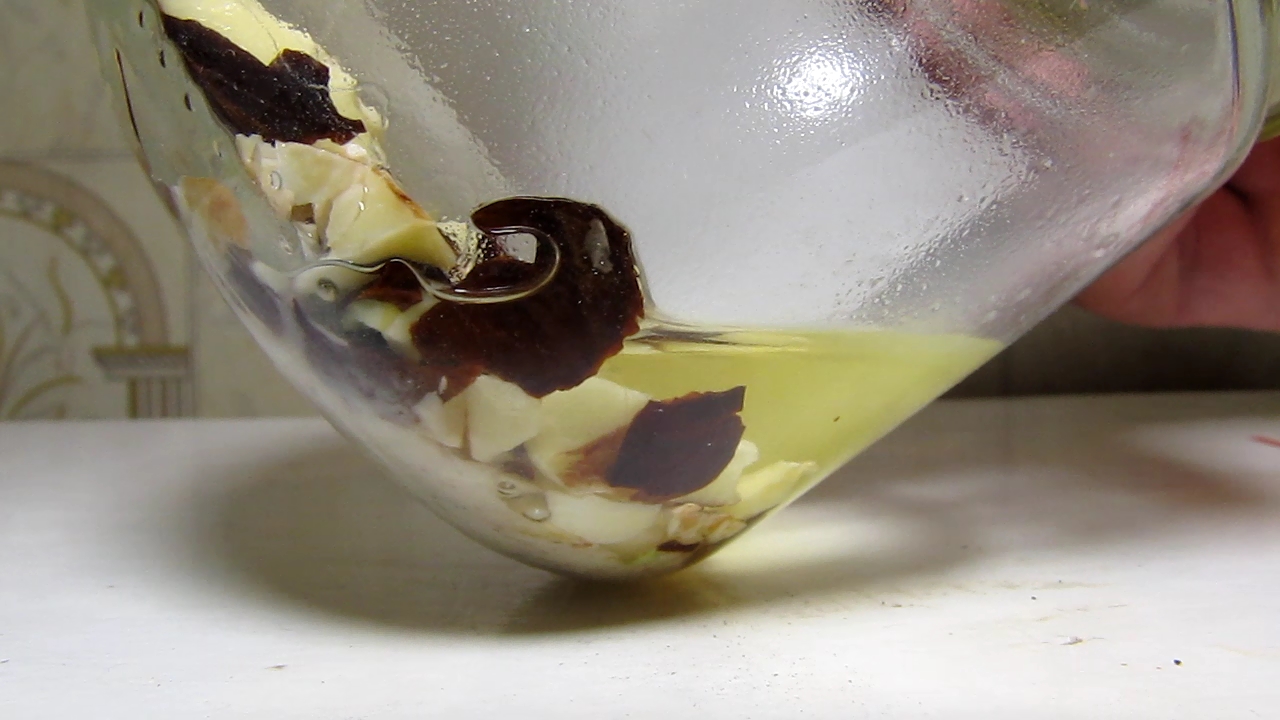
|
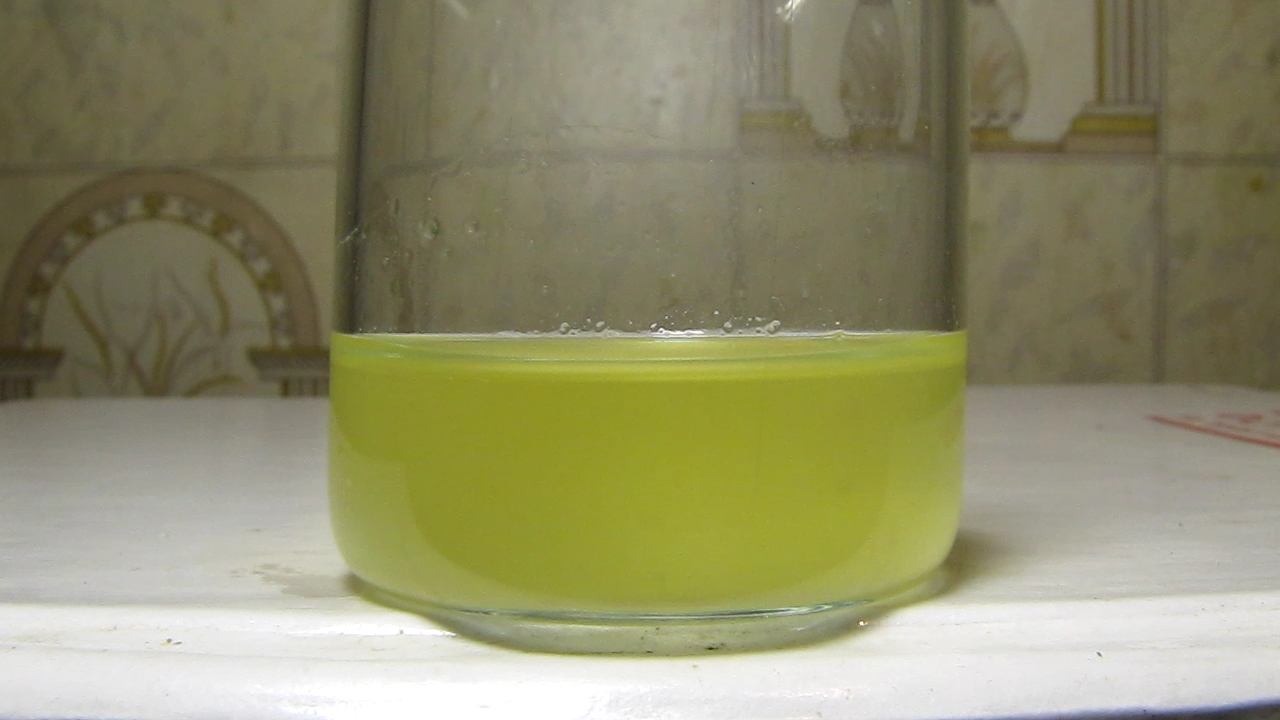
|
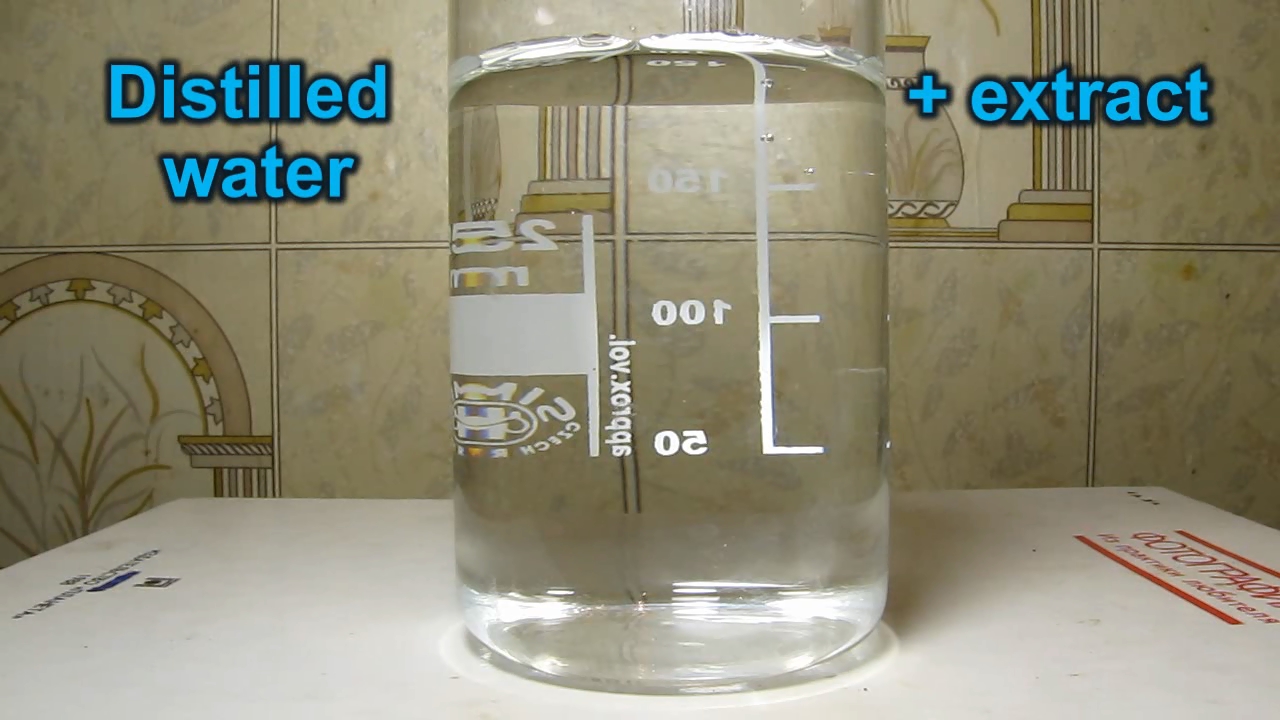
|
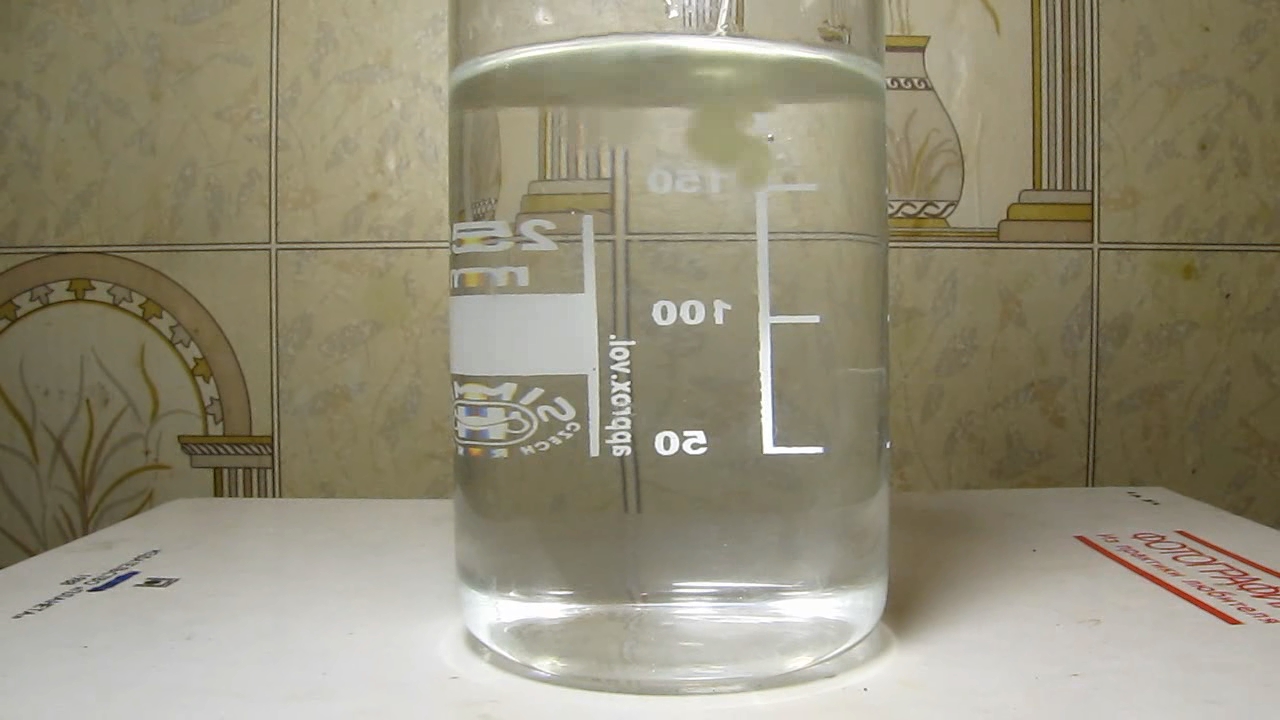
|
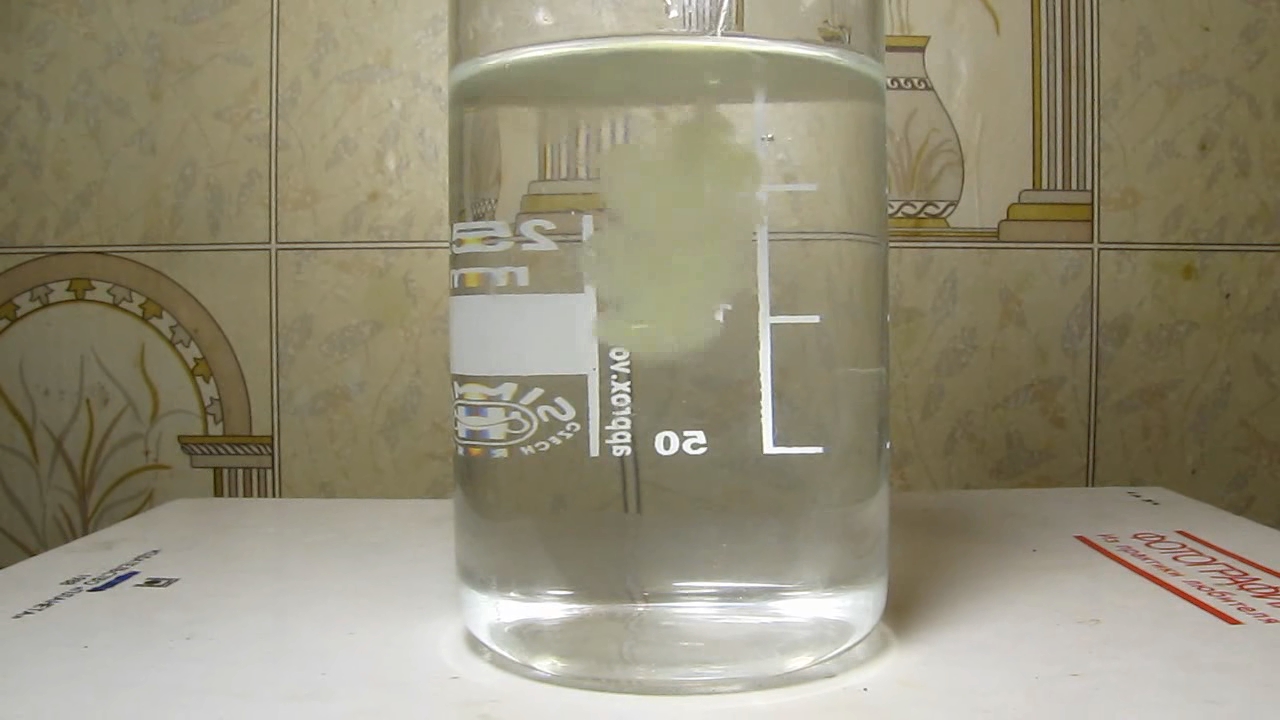
|
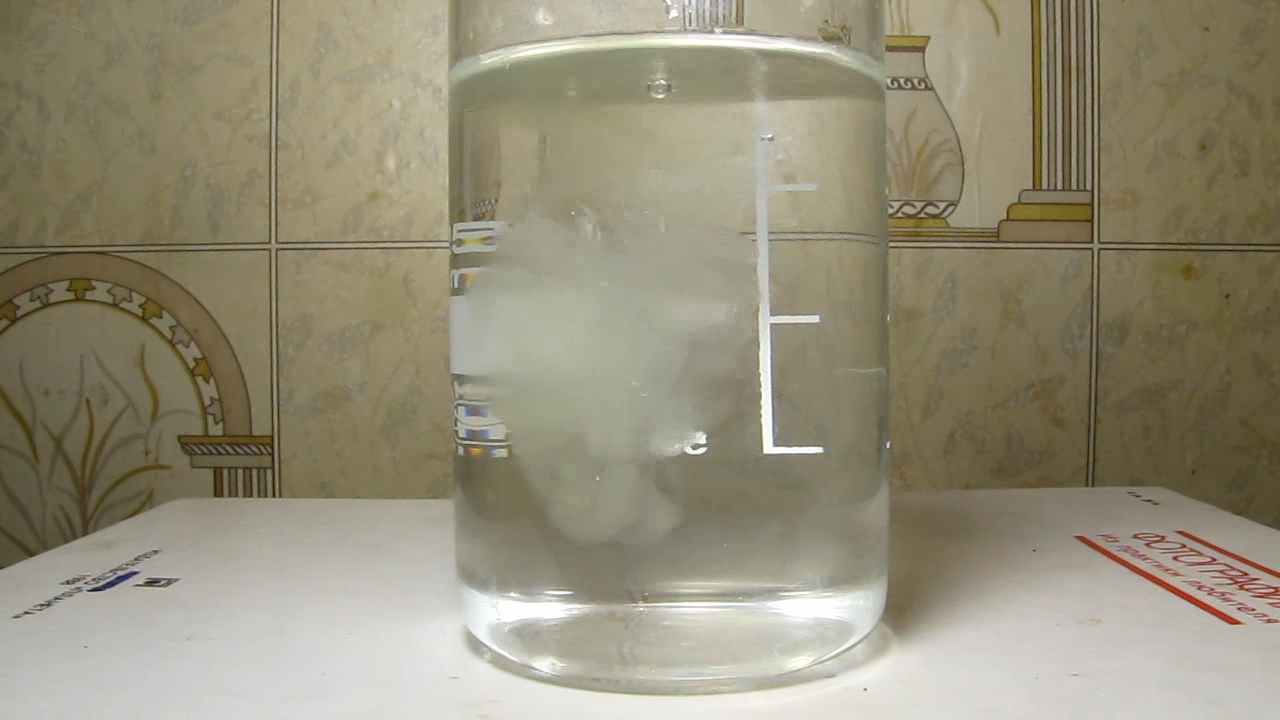
|

|

|

|
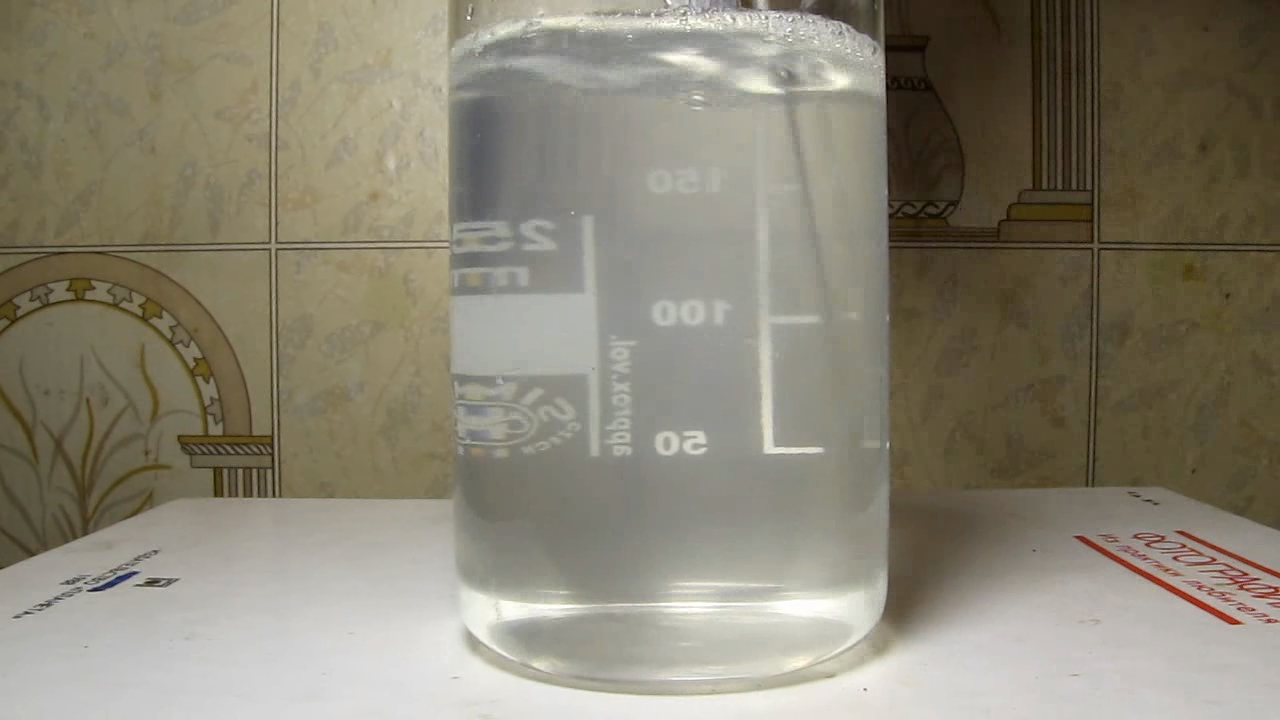
|
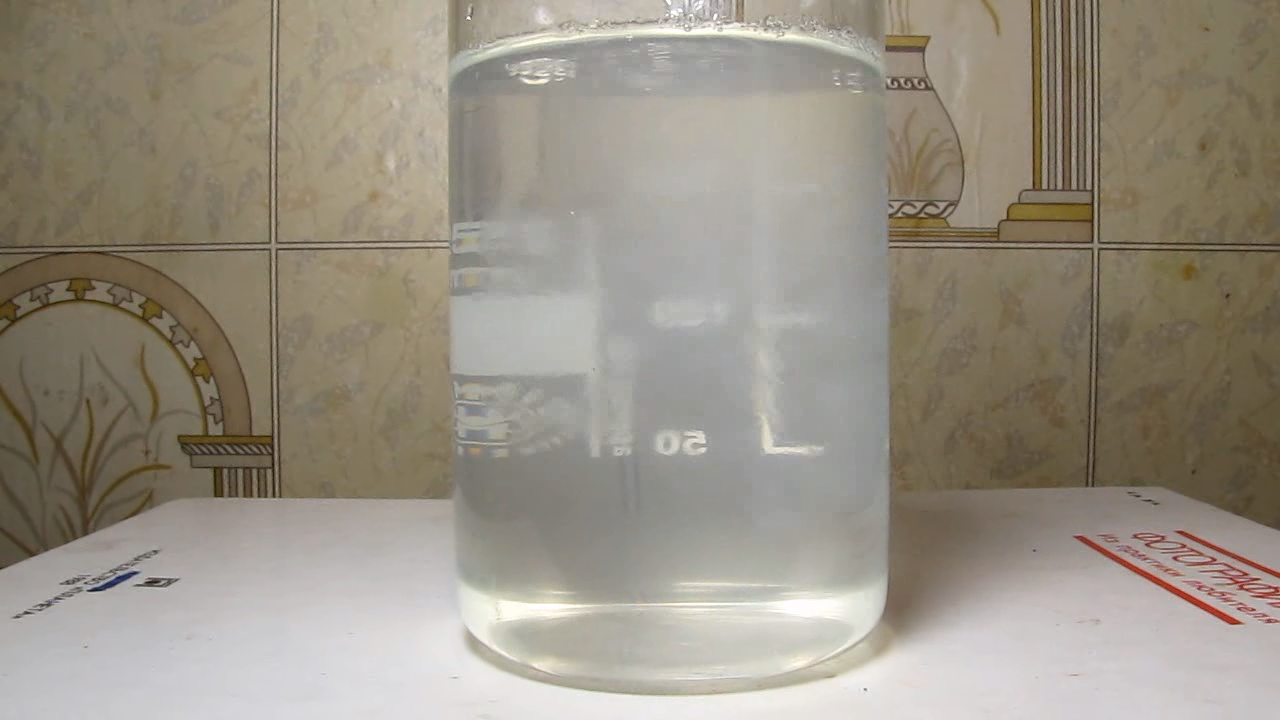
|

|
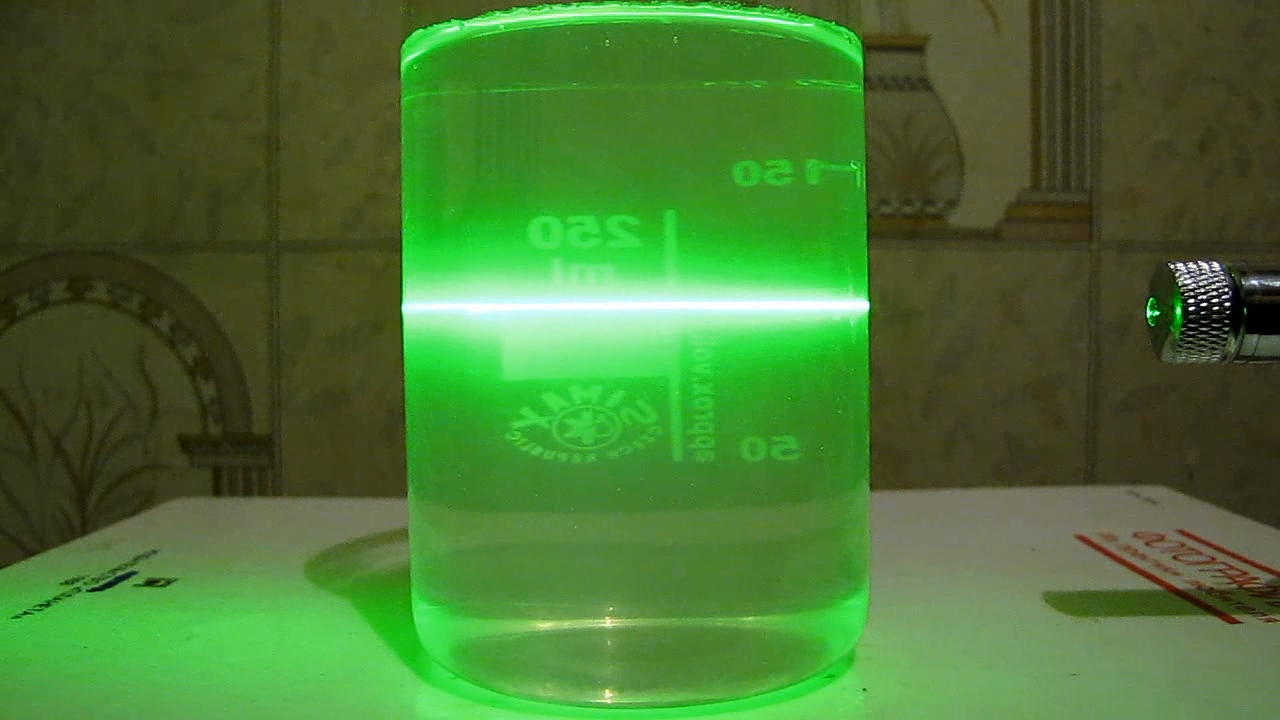
|
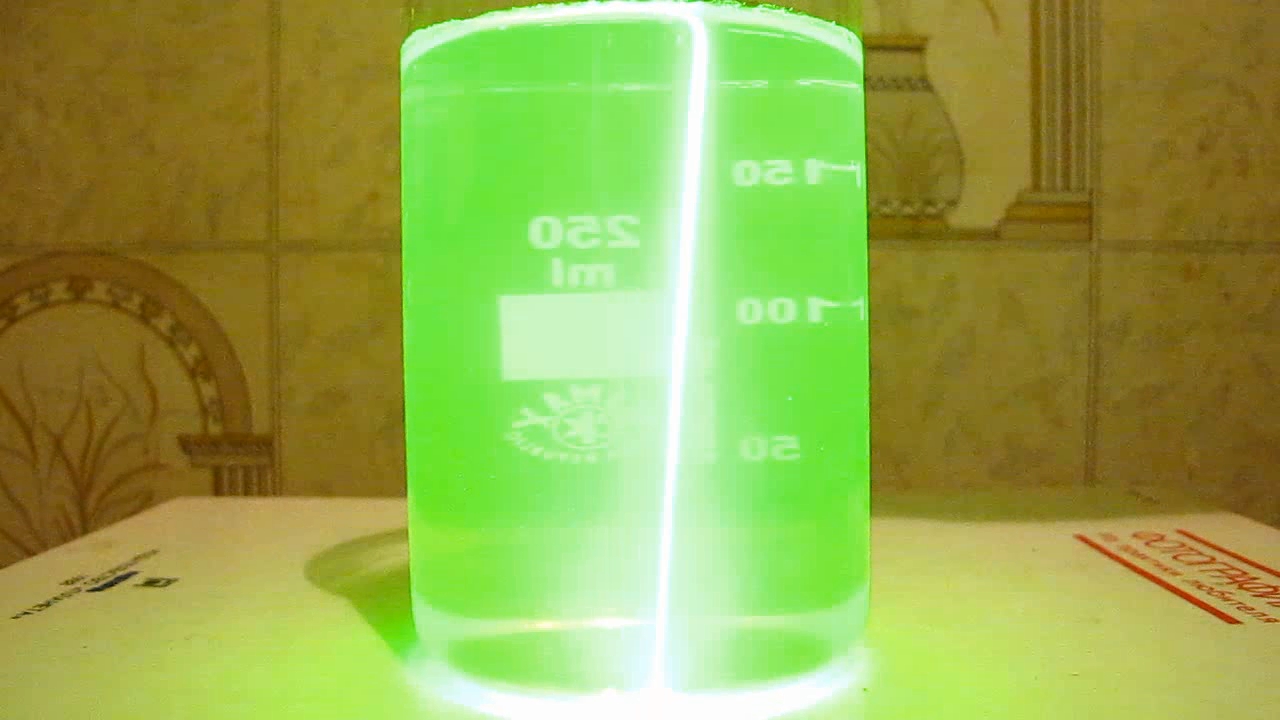
|
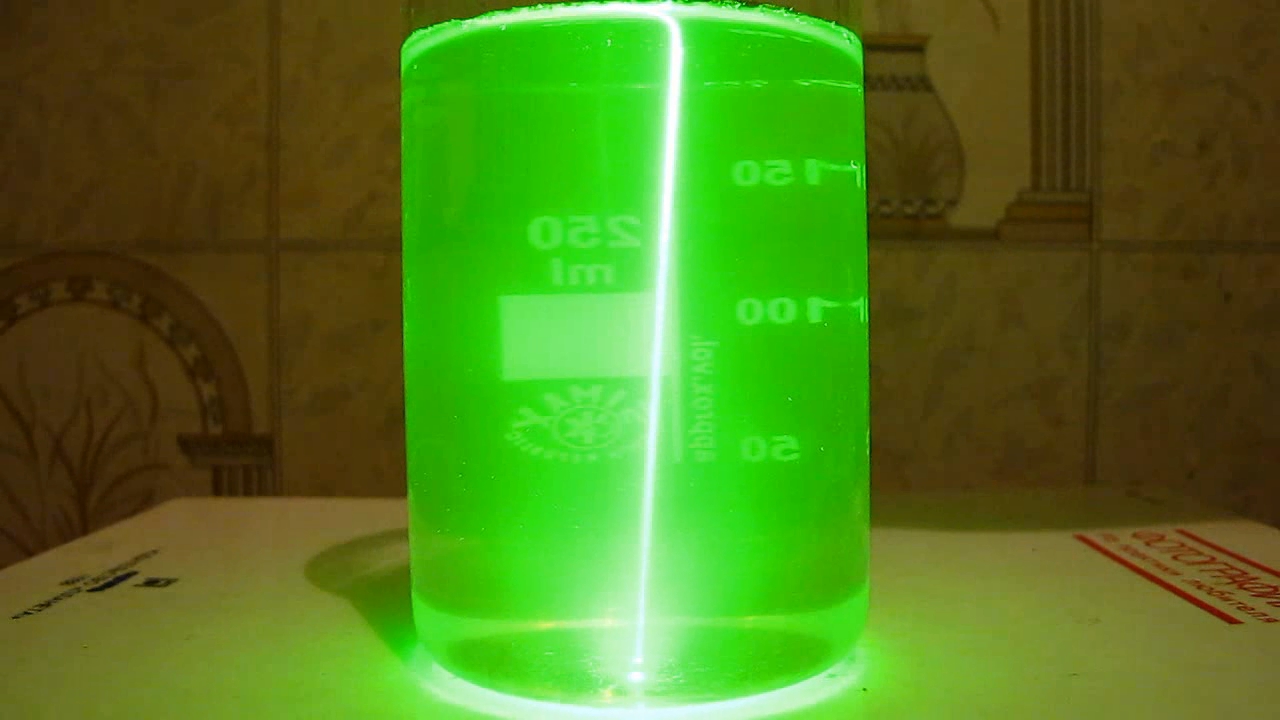
|

|

|
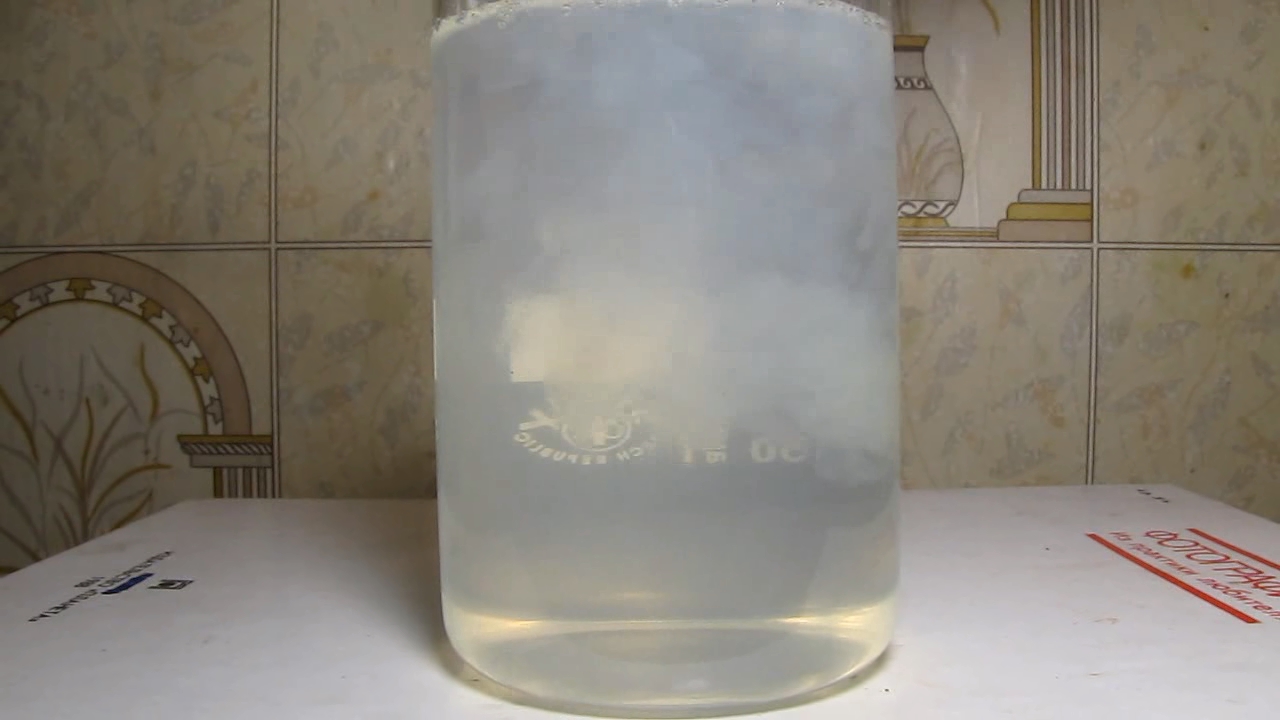
|
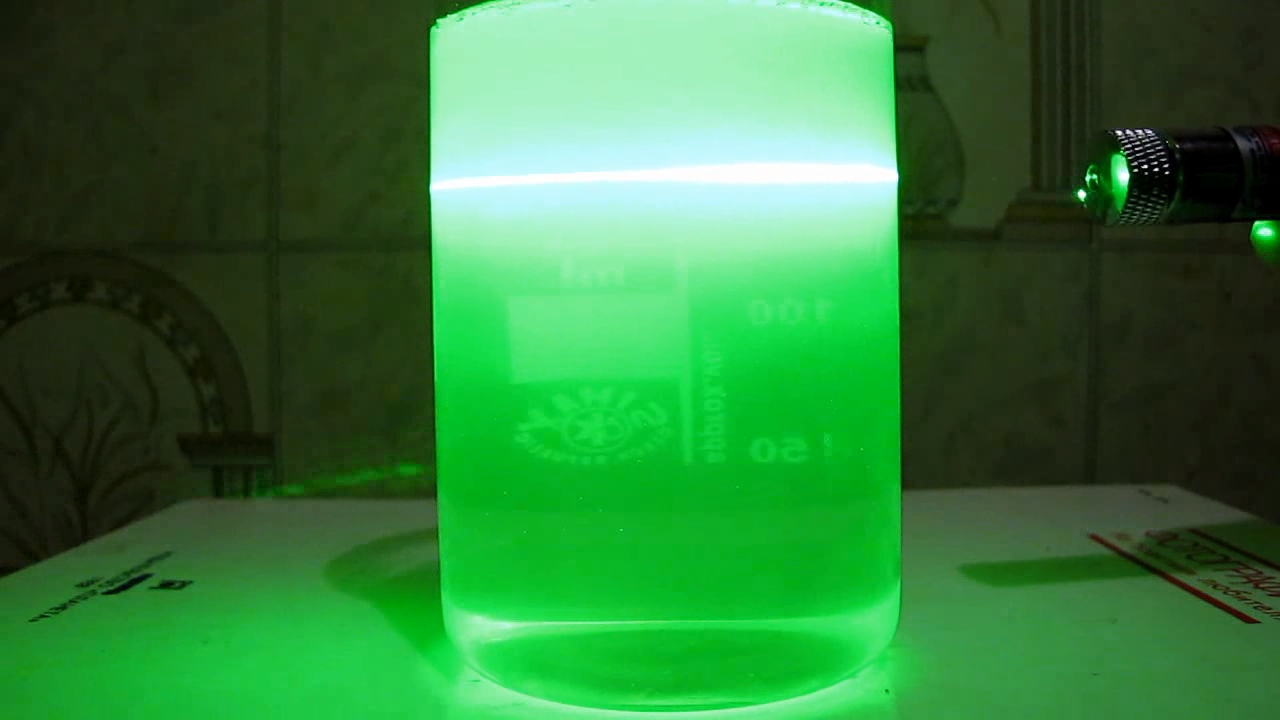
|
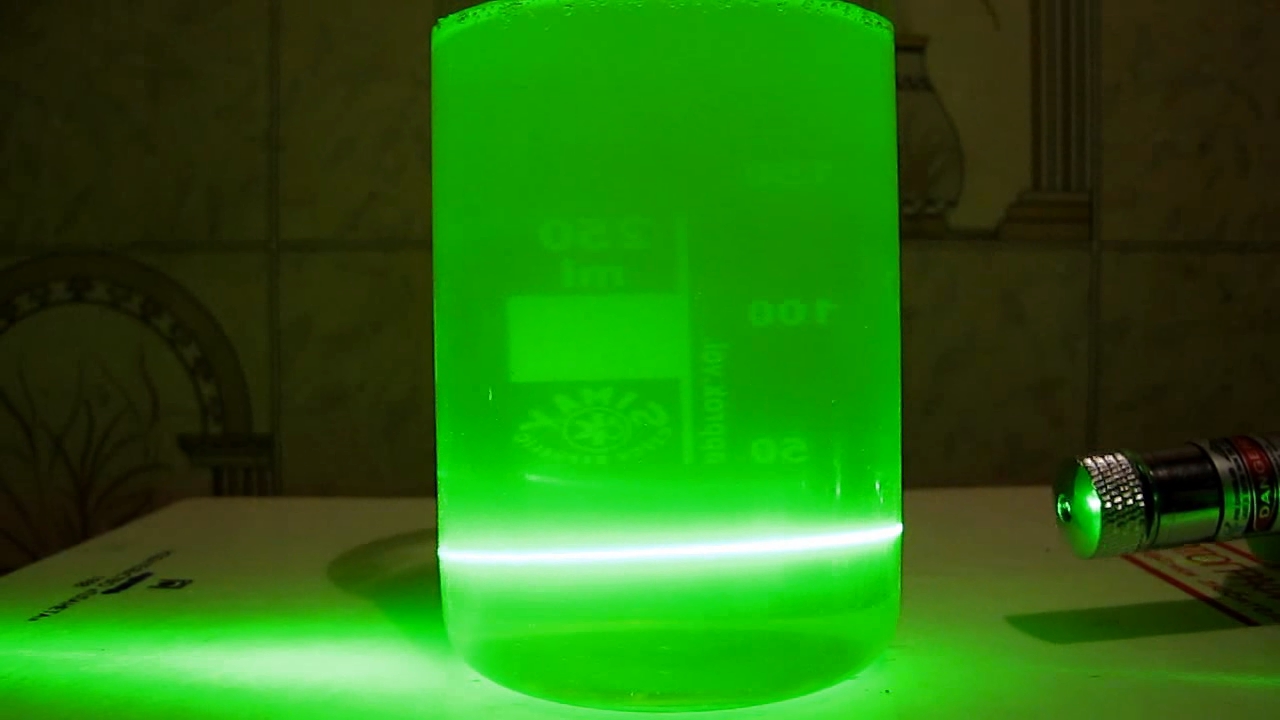
|
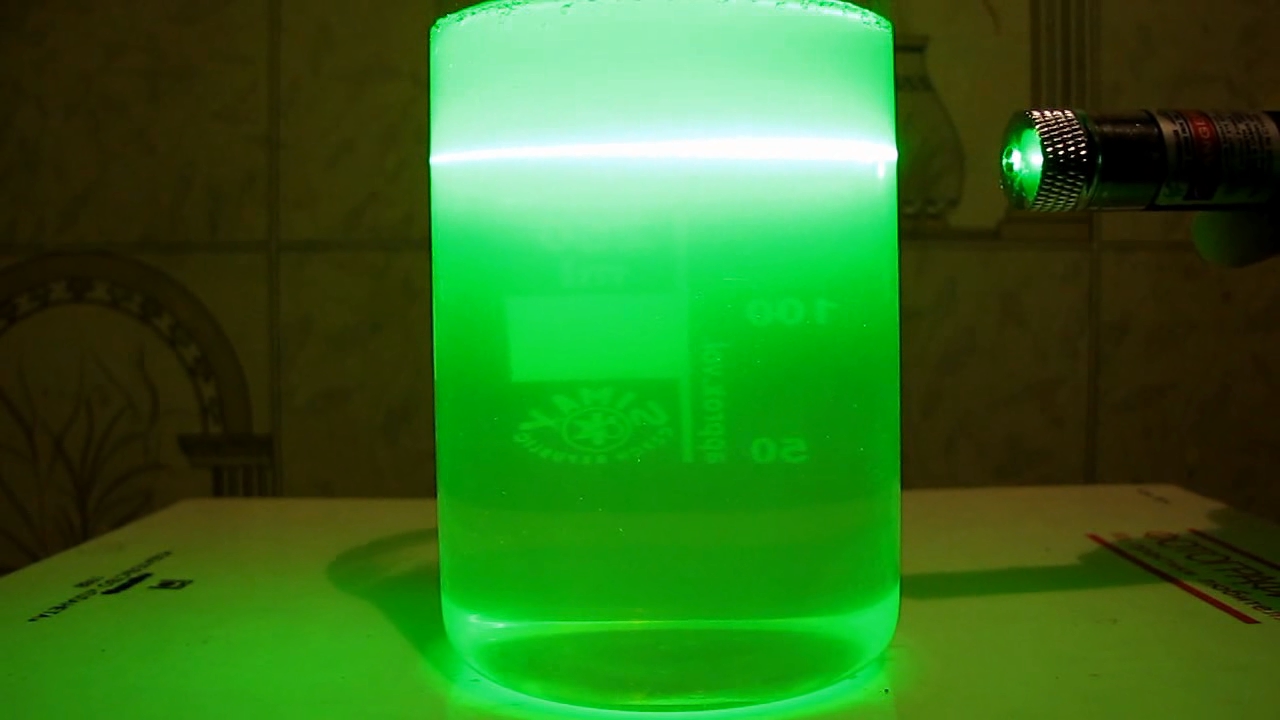
|

|
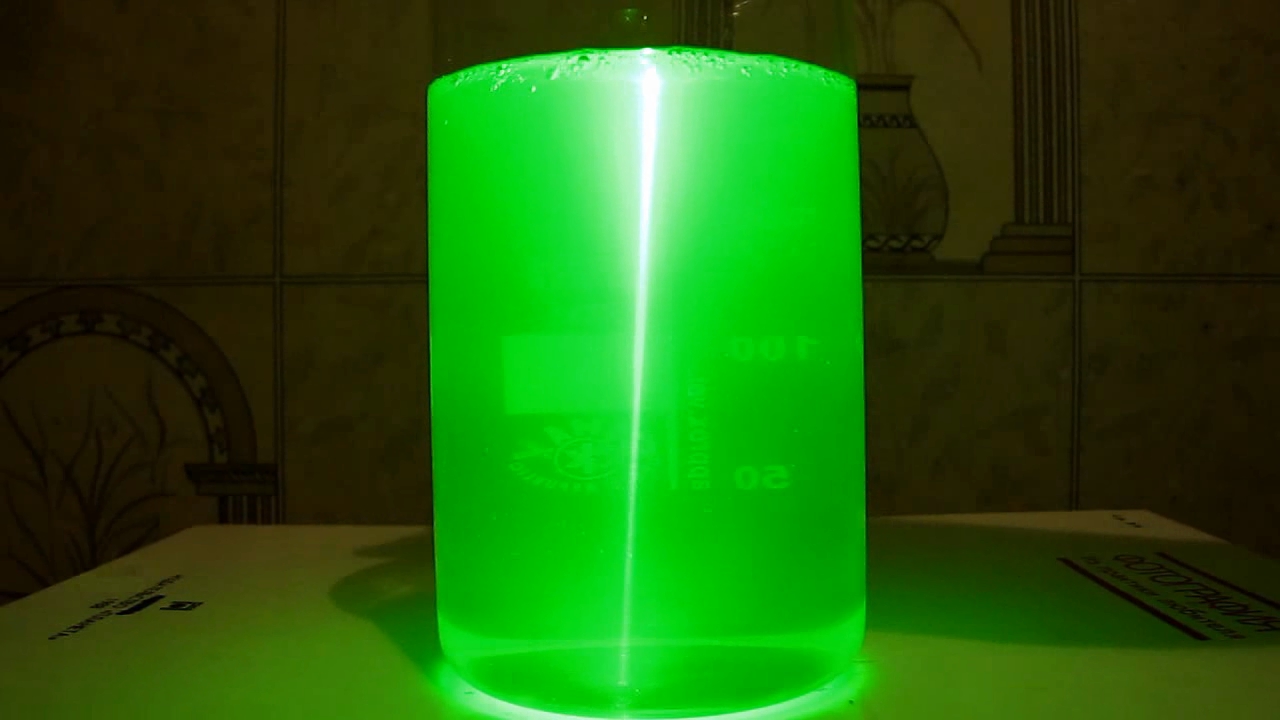
|
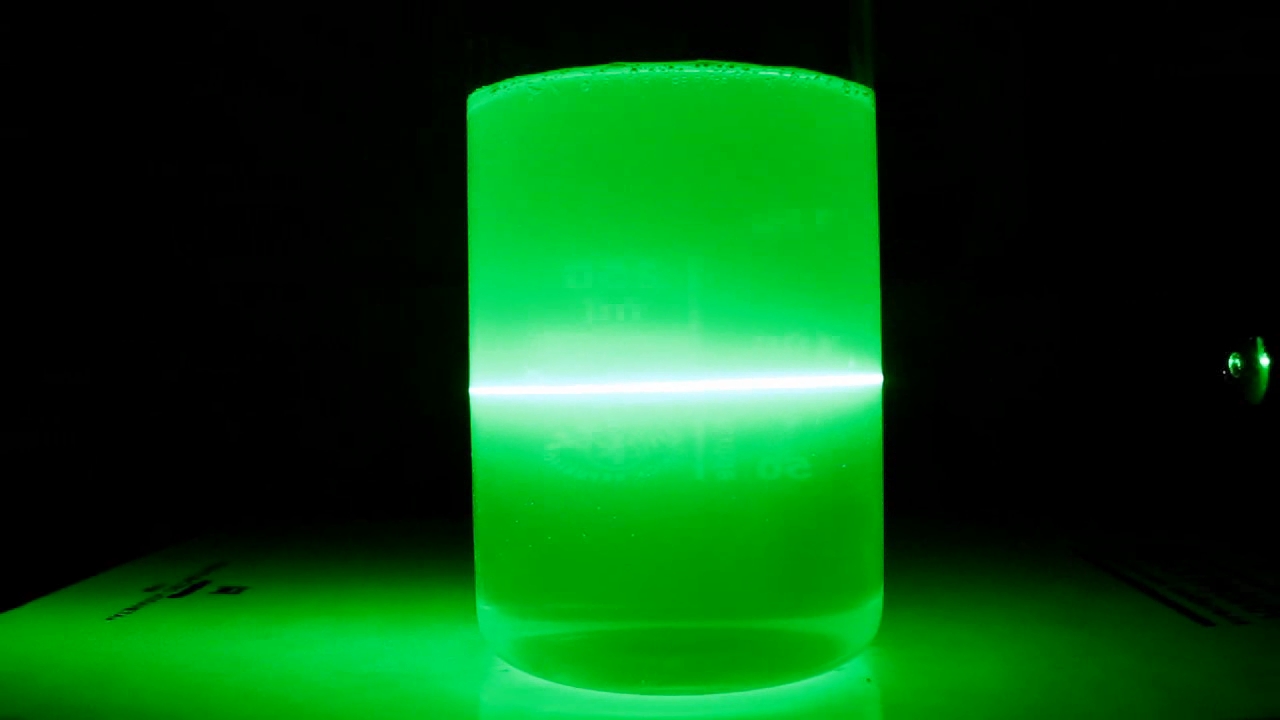
|
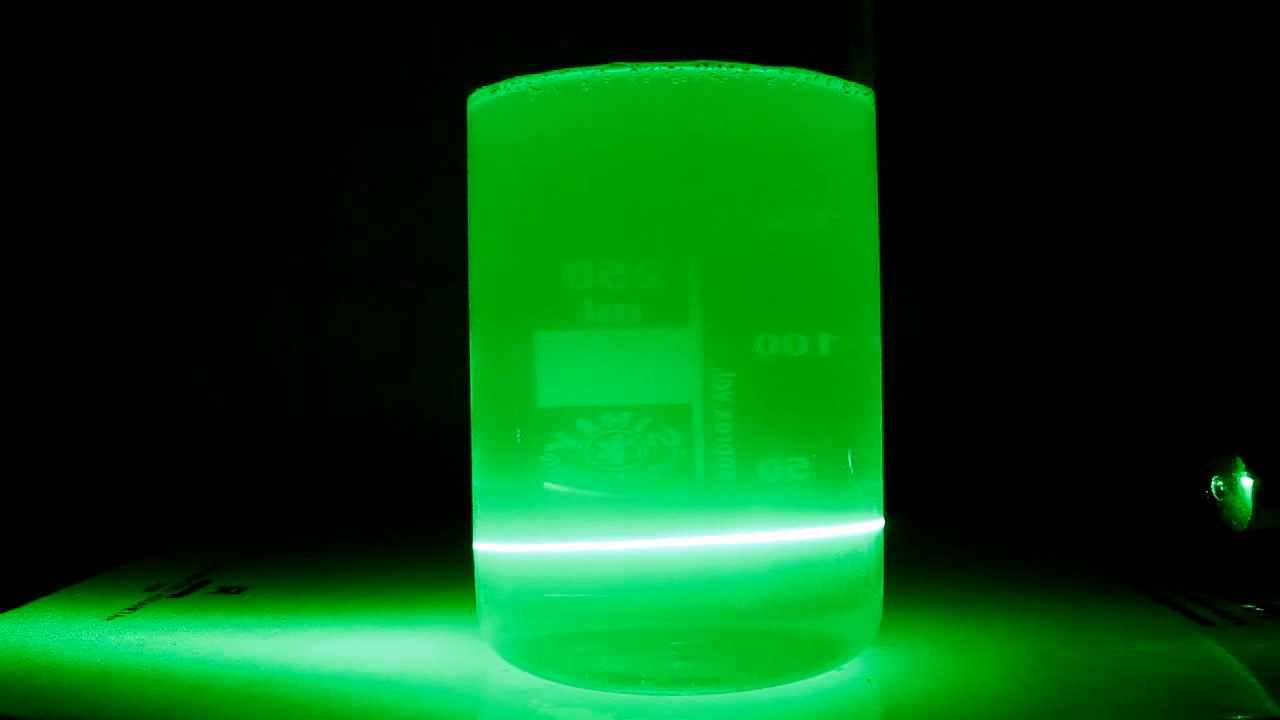
|
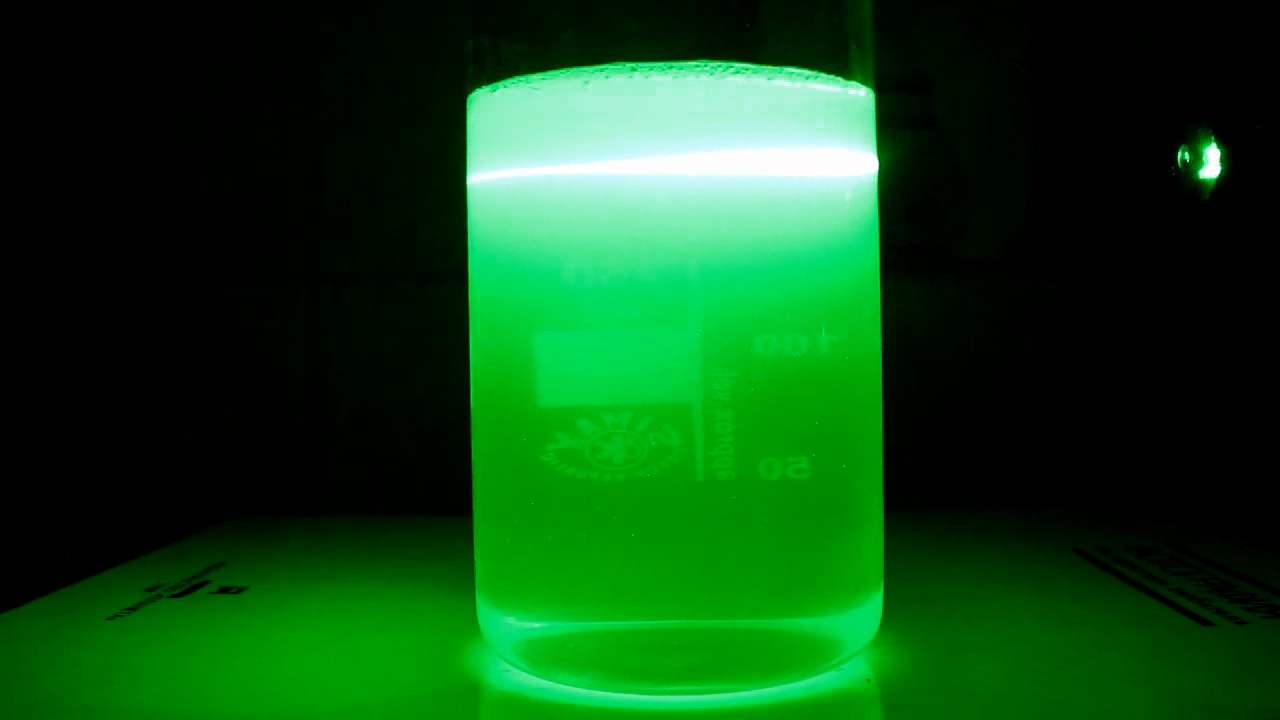
|

|
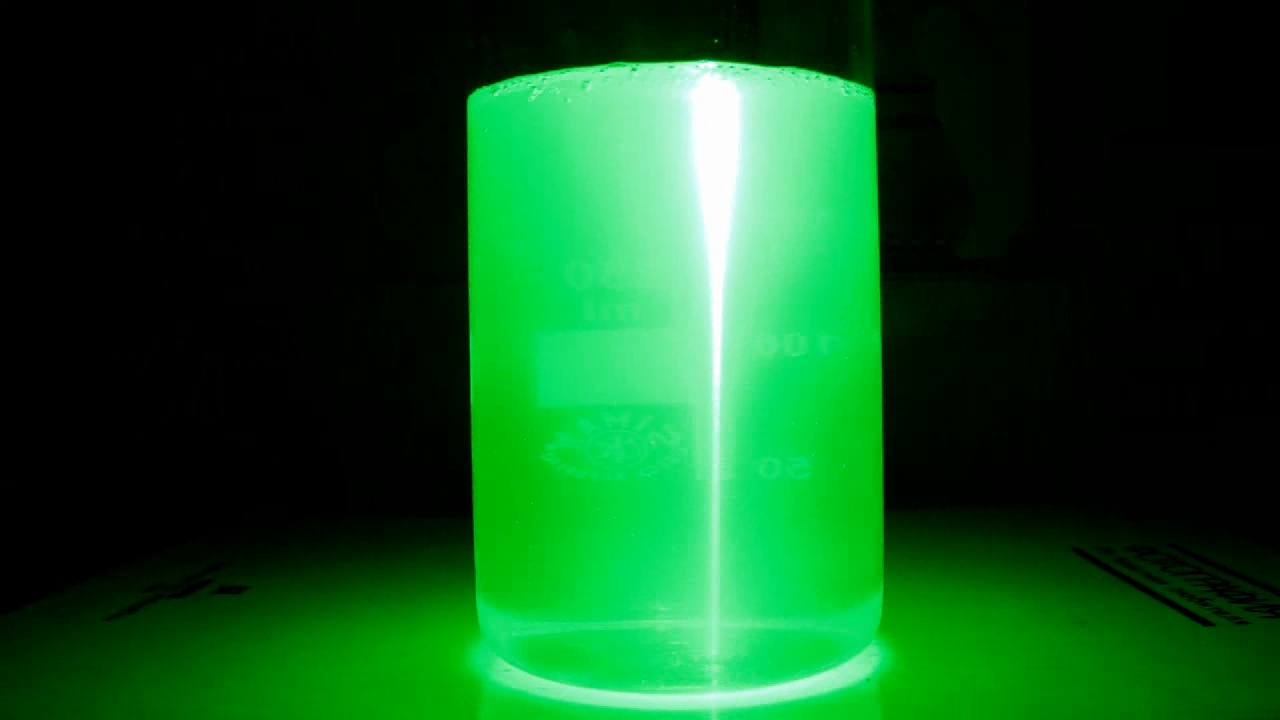
|
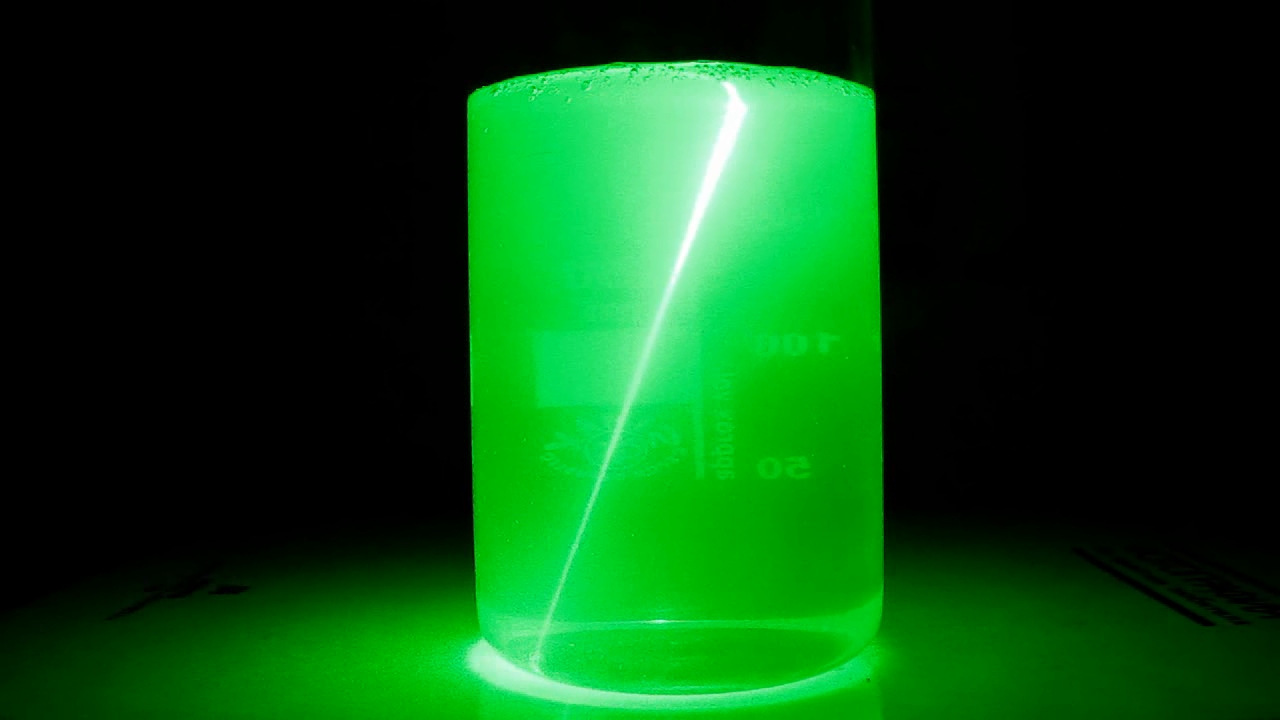
|
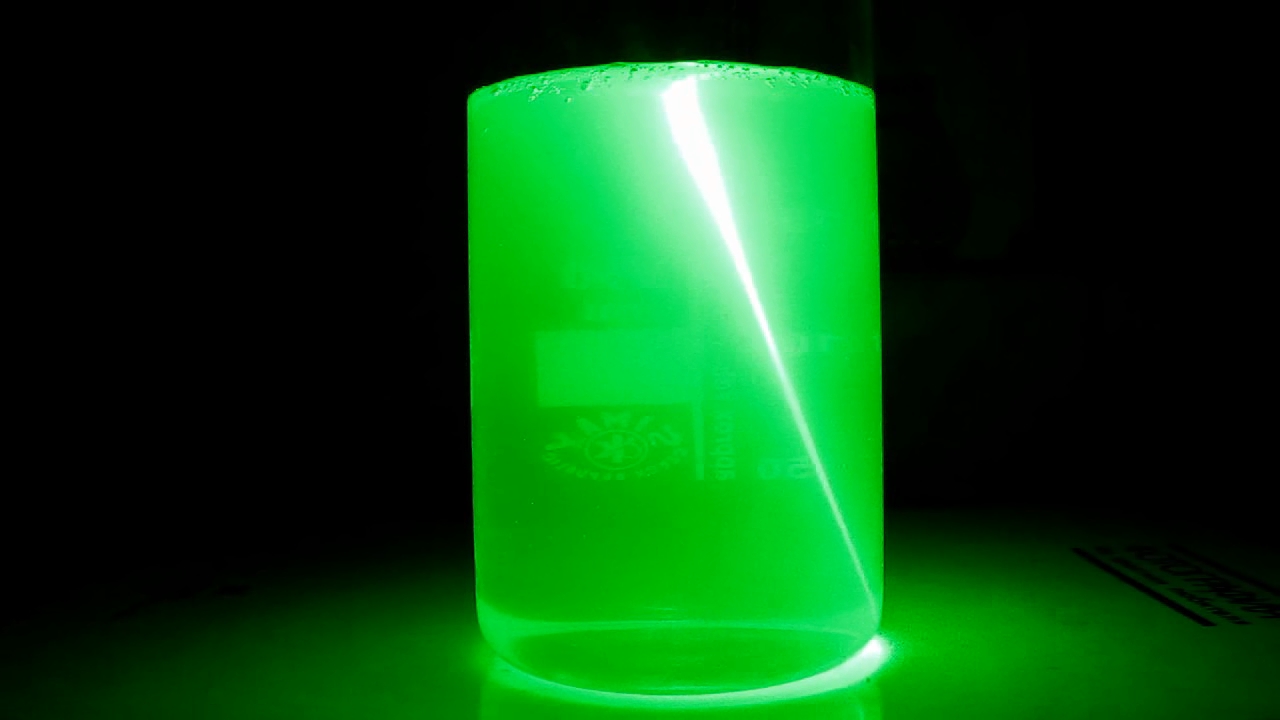
|